#[naga bless these two for eternity
Explore tagged Tumblr posts
Text

I think Rebecca may be Chrom’s type. Unsure however, more testing might be needed


A true match made in heaven. No, he is not staring at her like she is the only thing he can see? She's everything he could hope for. He thought his world was colorful but with her, he is seeing new colors he didn't see before--sights, experiences, heck smells.
Life with her is PERFECT.
"Well, well, queen of Ylisse, what are you trying to achieve with this? Haven't you already stole and locked this heart to be yours, and yours only?" hand placed on his chest, over his heart. "Aren't you a bit greedy, my love?"

Hands gently cups her face, thumbs caressing her cheeks before he kisses her softly. "You don't have to write papers or fill in anything; I love you, and I know you love me. No need for all these roundabouts, perhaps this is the only shortcut I believe in--" and he kisses her again. "Direct and sweet... your style, no?" he chuckles at her leaning to kiss him again. "See? Screw papers... Rebecca, you have my heart and my love. I could've never asked for a better friend, partner and a wife than you. Thank you for giving me all these great memories--thank you for giving me a family, a warm home to return to every day."

are you mister fayre embrumu's type? | accepting | @pieman1112
#ic.||#pieman1112#verse.|| the sky travelers#[your honor..........this is illegal she knew she would get them all slkdjfsd greedyyyyyyyy!!!!!!!#[I LOVE YOU REBECCA WAAAAAAAAAAAAAAAAAAAAAAAAAAAAAAAAAAAAAAAAAAAAAAAAAAAAAAAAAAAAAAAAAAAAAAAAAAAAAAAAAAAAAAAA#[add give him a father figure too#[she loved him/gave him confidence in his actions/got a father in hunter/gave him a big family/keeps him on his toes#[what else can she do for him???????? ALSO HELLO?? GHOSTY IN LAWS XDDDDDD#[with rebecca he got everything..thank you for loving chro m ;u;#[hes just pointing at her: my wife my queen my everything i love you i love you i love you i love you i love ----#[naga bless these two for eternity#[SLAMS HANDS ON DESK. LOOK AT HOW THEY COME!!!!!!!!!!!!!!!!!!!!!!!!!!!!!!!!!!!!!!!!!!!!!!!!!!!!!!!!!!!!!!!!!!!!!!!!!!!!1#[them: staring at each other (weird...)#[also them after a while: *stealing glances at each other* meanwhile hunter: HMMMMMMM......#[later on: krumb: ok i ...--rebecca: i like you~ ch/rom: !!!!!!!!!!!!!!!!!!!!!!!!!!!!!!!!!!!!!!!!!!!!!!!!!!!!!!!!! o-oh...i like you too ;u#[hunter in a corner: let me warn you. i got guns. lots of them.#[c/hrom: no problem. shoot me if i make her cry#[also chr/om: he wont shoot me right????????#[I CAN WRITE AN ESSAY ABOUT THESE TWO#[i didnt event mention their trips to the UEG ...#[or their children growing up..........#[or rebecca knowing how much he liked a big family that she gave him lucina thomas maria chloe and sawsan...........................waa...w#[is2g im ...imlovethemsobs#[to hell with swords when he got the perfect waifu
1 note
·
View note
Text
THE SIGN – CULTURAL REFERENCES, MYTHOLOGY AND META

This post comes on the heels of the one by @respectthepetty about mythology and meta of The Sign, linked here. 😍👍 If you've not read it yet, I recommend you do before watching any more of this series, because it will help things make more sense (especially if you're not familiar with some of the cultural references thrumming in the background).
Anyway, I'd previously done some research on the legend(s) of the Garuda and the Naga in Southeast Asia, and so I'm writing this post to share what I've found because it does have relevance to at least some of what we're seeing onscreen in The Sign, and elaborates on @respectthepetty's post.
The Garuda and the Naga are mythical beings with origins in Indian mythology that have been transposed into cultures across Southeast Asia.

In Hinduism, Garuda is a single deity, depicted in either full-bird form or part-bird and part-human, and is the king of birds and also a divine sun-bird (with physical attributes similar to an eagle's). His elder brother, Aruna, is the chariot driver for Surya the sun-god, while Garuda himself is the mount of Vishnu.
In Buddhist mythology, the garudas (sometimes also spelt garulas) are a society and race of gigantic predatory birds, sometimes also depicted as part-human in form. The garudas are intelligent, social and blessed with might and magical powers.
Thailand may be predominantly Buddhist, but it has also been strongly influenced by ancient Indian culture and Hinduism, and thus both the concept of a single deity Garuda and the race of garudas co-exist in Thai mythological beliefs.
The nagas on the other hand, are snake-like or dragon-like creatures, whose realm is the water world. (The word naga is derived from Sanskrit and is also etymologically related to the English word snake.)
In mythology nagas and garudas are perpetual enemies, although neither side is actually identified with good or evil – they are simply two groups eternally at war with each other (so occidental-leaning minds should dispel any preconception that the water serpents are necessarily the bad guys in The Sign, even though the narrative seems to be tilting in that direction).
When borrowed into popular culture (as has been done for The Sign) you may sometimes see influences of Chinese dragon and phoenix mythology (as Chinese cultural influence is also present in Thailand, and the dragon/phoenix motif of Sinitic culture nicely parallels the naga/garuda conflict pairing). And because of Garuda's association with the sun in Hinduism, and a parallel with the fiery phoenix of Western mythology, you may sometimes see garudas portrayed as aligned with the sun and/or flame as well.
There are some hints of these in The Sign. The naga that Phaya encounters while struggling underwater during the open sea training challenge in Ep.1 is very Thai in appearance (especially with the curved, forward-pointing crest, making it look much like the nagas that adorn Thai temple architecture). But the array of pronged, backward-pointing horns and trailing antennae appear to be a design nod at Chinese or Japanese dragons (East Asian dragons are also strongly identified with the watery realm, by the way). And in the graphics of the series (e.g., in the poster at the start of this post), the sky (the realm of Garuda) is suffused with sunlight and speckled with what look like drifting sparks, referencing sun and flame.
Because of the wings tattooed on his back and his time in the air force, Phaya is most likely the reincarnation of a garuda in human form (and this is why he struggled with the water challenge, as he was completely out of his element).

This is also possibly why we see him smoking early on in the series (because of the alignment of Garuda with the element of fire), and significantly he does this while Naga Tharn (irked by Yai's teasing at the dining table) seeks refuge in the washroom (which is ห้องน้ำ/hong naam in Thai, literally water room):

Billy also describes Phaya's character in the promo video for the series (linked here) as being "like fire, always hot and burning... quite hot-headed." 👍
Elsewhere in the same promo video (linked here), Tharn's good friend Chalothon is explicitly identified as the reincarnation of an important naga, which immediately signals that he and Phaya will be at odds in the series:

The water deity that saves Phaya during the open sea challenge – Wansarat, whom he drew in his sketchbook – is not just Freen Sarocha in a fancy scuba suit. 😂

If you look at her arm and hand when she reaches out to save Phaya (before she turns into Tharn) the green scales meld into the skin of her human wrist – they're part of her natural covering, and she's really a nakhee/nagin/nagini, a female naga, appearing in human form to save Phaya.
The narrative has made it strongly obvious that Phaya is a reincarnated garuda, while Tharn is the reincarnation of Wansarat, from the lineage of the nagas. And the teaser-trailer (linked here) tells us that Phaya and Tharn/Wansarat are lovers bound to each other through time:

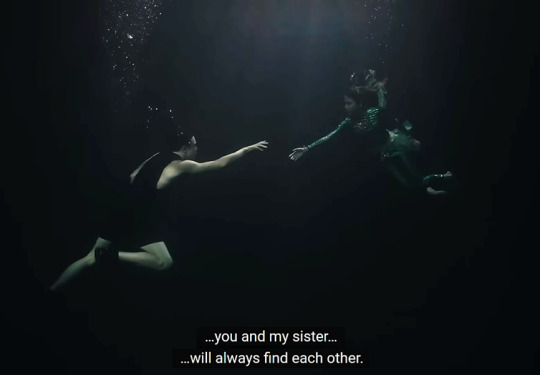
However, the special promo video (released 24 November 2023) also tells us (in Heng's interview linked here) that Chalothon and Wansarat were lovers in past lives, even while it is Phaya and Wansarat (reincarnated as Tharn) who are paired by fate in The Sign.
And as the nagas and garudas are bitter enemies, the love story between Phaya and Tharn/Wansarat that transcends time and reincarnation cycles is also one that must have been (and will continue to be) forbidden by their respective naga and garuda tribes (especially since Tharn/Wansarat also used to be naga Chalothon's lover), and will undoubtedly be a source of conflict in the series. This is way beyond the Montagues and Capulets! 😍
So with this as the base, I took a look at the characters' names, and those belonging to Phaya, Chalothon, Tharn and Wansarat especially also reflect their garuda/naga origins. 🤩
Phaya's name (พญา) means lord, king or leader. While it can be applied to the nagas (พญานาค/phaya naak refers to the King of the Nagas) it is also used for Garuda (the Thai national symbol) – พญาครุฑ/phaya khroot, or Lord Garuda (and is what his name references in The Sign).

(above) Billy Patchanon as Phaya
Chalothon's name (ชโลทร) is rare, but it is derived from Pali/Sanskrit and means river, sea or body of water, reflecting the watery homeland of his naga persona.

(above) Heng Asavarid as Chalothon
Tharn's name (ธาร) also has a connection to his water-dwelling naga roots. Tharn/ธาร is short for ลำธาร/lam thaan and means stream, brook or creek (and he is thus a naga nong to Chalothon's phi).

(above) Babe Tanatat as Tharn/Wansa
However, Tharn is his chue len. His formal name is Wansa, and is the same Wansa in Wansarat (which the narrative lets us know at Ep.1 [3/4] 9.35).
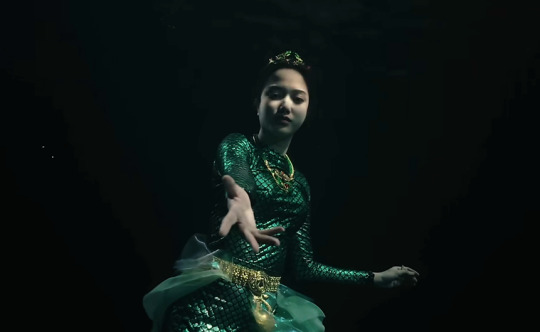
(above) Freen Sarocha as Wansarat
Now Wansarat is spelt วรรณษารัตน์ in the subtitles (at Ep.1 [3/4] 9.02), and I can't find any translation of it that makes sense in the context of The Sign's world-building.
But Wansarat's name is spelt differently elsewhere on the Internet (on Thai drama websites, and movie databases, etc. like thaimovie.org), and I assume they've all based it on official releases from Idol Factory because the spelling is consistent across these other sources – it's วรรษารัตน์ there.
And Wansa/Wansarat spelt this way also reflects the nagas' dominion over water, because วรรษา/wansa (an archaic word, referenced in an older dictionary but not newer ones) means rain or rainy season (from the Sanskrit varsha) – in Thailand the nagas are also associated with rain control, and prayers are offered to them for timely and abundant rainfall when it is needed. (The -rat part of Wansarat is a feminine ending meaning jewel or gemstone, and may echo with meaning for speakers of Indian and Sri Lankan languages, since it's derived from the Pali/Sanskrit ratna).
Just out of interest (because nobody asked 😂) some of these naga/garuda elements were also present in the early episodes of KinnPorsche – the den of the Theerapanyakuls (nagas, wealthy beings of the underworld) was full of watery elements (e.g., the waterfall, the various pools, and Tankhun's carp – which in Chinese belief are the original, natal form of dragons). The -nak in Kinn's formal first name Anakin (which is not a traditional Thai name) is also a nod at the word naga. Porsche had the tattoo of a fiery phoenix on his back, and was out of his element whenever water was concerned (e.g., his failed pool challenge, the mermaid costume punishment, his misadventure with the sprinkler when he tried to smoke in the store room – water vanquishing the flame). Kinn was unable to make fire when they were trapped in the forest, despite claiming to be friends with the flame, while Porsche could immediately do it.
But I didn't see the KinnPorsche narrative taking the naga/garuda themes much further than these random nods in the earlier episodes. Maybe it did (like Kinn and Porsche could be seen acclimatizing to each other's realms more), but I just couldn't be bothered to look at the show more closely since it didn't really stand up to deeper scrutiny, and after the first few episodes I just went along for the exhilaration of the ride instead. 👍
Anyway, I'm totally bedazzled by the level of world-building going on in The Sign and look forward to more from the series. If the first episode is anything to go by, I think Executive Producer Saint Suppapong may be on to something! 😍
#the sign#the sign the series#mythology#naga#garuda#naga and garuda#thai mythology#thai bl#phayatharn
588 notes
·
View notes
Text
The Enigma of Elune & the Elements

The goddess Elune is known by many names across cultures and even planets; such as Mother Moon, White Lady, Night Warrior, Mu’sha, etc. She has a wide reach across various spheres of cosmology, and her domain seems to at least encompass the arcane, the natural, the astral, the spiritual, and in many unexpected connections–the elemental. It could be that, as Elune is considered a life goddess with some connections to the afterlife, she may have pseudo-elemental expressions of power because they are partially intertwined with spirit. This might explain the physical tangibility, and yet silvery-blue coloring that often manifests within elements of Elunian origin. The following is a collection of curiosities in which the goddess’s influence presents itself in such forms.
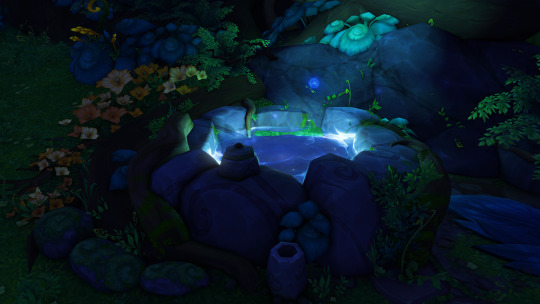
Water
The first, most notable link between Elune and the elements would be her thematic ties and manifestations of power within water. An iconic and central piece of Kaldorei culture is the moonwell: it is often the focal point of temples, and a place of respite in the wilds which restores mana, cleanses impurities, blesses armaments, purifies corruption, and even banishes maddened elementals. Dave Kosak, in his development of the Warcraft cosmology, describes the combination of spirit and water as one of the main vehicles for healing; both of which are linked to the outer ring of Nature. An old myth of the Kaldorei Empire described Elune sleeping inside of the Well of Eternity during the day, and rising into the sky as the moon each night. Today, moonwells are established through local wild spirits granting their blessing, a combination of natural and lunar magick, as well as a droplet of eternal waters from another purified well. All of these spheres together (spirit, water, nature, and arcane) encompass the very essence of Elune's moonwells.
Tears of Elune are one of the most recurring themes in relation to the goddess - seen in the pillar of creation, and lesser items scattered throughout the world. We do not know for certain how these tears form; however, there is an implication that they are a manifestation of Elune’s emotions, whether crying tears of sadness, or of joy. These remnants from the goddess seem to possess a myriad of properties the beholder can make use of: the Tearstone of Elune legendary ring has a chance to cast an additional regrowth on targets, Tears of the Goddess from the Hyjal raid slow the player’s falling speed, and Elune’s Tear can ease the symptoms of illness. Mu’sha’s Tears are gathered at the base of a waterfall in Highmountain, which are guarded by fiercely protective water elementals, to eventually be used during a ritual that allows us to witness the events of the War of the Ancients. Interestingly, these specific tears are said to “flow of their own accord,” entirely ignoring the rushing rapids that would normally carry away physical objects or other water currents; which may lend to the notion that Elune’s elemental manifestations are partially comprised of spirit. The Sisters’ Tear, born of Elune and the Winter Queen’s combined power, is yet another example of renewal and lifegiving springing forth from the goddess’s sorrow: which resulted in the growth of the World Tree, Amirdrassil.
Elune is described as having partial influence over the tides, a power that she shares with Neptulon, as evidenced by the Tablet of the Balancing Tides: "The whispers of Elune and Neptulon play on the tides, their words etched in stone are a tribute to the balance of their powers." There is additionally a brief archaeology quest in Throne of the Tides we can pick up from an ancient fountain. Delving into our historical knowledge from reading a Highborne Scroll fragment, we discover that the purpose of this fountain is to confer a blessing called “Waters of Elune,” which specifically increases our damage against the naga while inside the domain of Neptulon, further strengthening the alliance between the two. The goddess also seems to feel a responsibility, or at least have an interest, in purifying maddened water elementals. We see this demonstrated in Moon Priestess Tharill’s questline in Darkshore, who asks us to use a relic called the Orb of Elune; which has the power to soothe and permanently banish these beings back to their plane. This ultimately protects the elementals from the cycle of being resummoned, further manipulated, and driven to madness. As the orb was carried by Tharill just south of Auberdine, this may have been a prized and sacred relic of the town used in banishing angered elementals from the coasts of Darkshore. It would not be the first or only sacred artifact kept here, as Auberdine also once housed the Eye of Elune.
Elune’s aqueous blessings were also a crucial part in the battle of the Molten Front within the Firelands. It seems that somehow, the nature of Elune’s blessings can circumvent traditional interactions between elements. The very existence of a moonwell, or any body of water for that matter inside the scorching plane of Ragnaros, would reasonably evaporate. The fact that this one is able to withstand the extreme heat of the Firelands speaks to a high resistance, if not complete immunity, to the effects of fire. Ayla Shadowstorm explains that the moonwell’s waters can indeed provide some protection against flame, as well as bless the expedition’s food stores. Once the well is filled, small bushes and trees begin to sprout nearby that eventually bear eternal fruits which can be used indefinitely while inside the Molten Front. While it is unclear what role Elune plays in the existence of wisps, these spiritual beings are considered “perfectly suited” to banishing elementals (similar to the goddess herself) as seen in this quest where the wisps aid us in closing the portals of fire elementals.
In the tauren mythos of Eyes of the Earthmother, Mu’sha as she is called, is said to "dance with the waters of the tides," "flow out of shadow’s reach like water," and bind injuries with the powers of water and wind.

Fire
The satyr camp of Sargeron in Desolace, known colloquially as the Palace/Sancutary/Cathedral/Temple of Elune, reveals an interesting relic that links Elune to the element of fire. Unearthed from the ruins of the temple here, there is a tall runestone monument known as the Ancient Vortex Runestone. It is said that the ancient Kaldorei “revered the gems created by this mystical object, claiming that they were gifts from the goddess herself. It was believed that they were weapons capable of delivering them from any enemy.” As we progress in the questline, we are able to make use of these gemstones, which summon forth a giant firestorm, whose power is strengthened “either through sustained worship of Elune, or charged by spiritual energies of the fallen.”
During the war against the scourge in Northrend, the settlement of Stars’ Rest converted their moonwell to house the liquid fire of Elune, an offshoot of traditional moonwell waters. The very nature of this substance seems to be an oxymoron, combining two opposing elements of fire and water into one. However, if we consider again Dave Kosak’s notes on the life-giving essence of spirit; he links spirit and water with healing, and spirit and fire with holy powers of retribution. The fact that Elune’s liquid fire encompasses spirit, water, and fire then becomes clearer in the goal of this quest: to pour it over the corpses of scourge-blighted animals and cleanse them of their corruption. This essentially combines Kosak’s ideas through healing their bodies and demonstrating a retribution against the unnatural state of undeath. This may also speak to the circumventing of traditional elemental interactions, as the liquid fire of this moonwell (assumedly) prevents the vessel from freezing over.
In Darkshore, a moonkin named Aroom requests our aid in cleansing their corrupted brethren. They task adventurers with slaying a ghost of their kind who wields a relic called Elune’s Torch. After retrieving the torch, Aroom creates a ritual bonfire with the flames from this item, which allows the corrupted moonkin to find rest in the afterlife and “return to Elune, finally.” It could be that these flames of Elune act as spiritual purification, essentially burning away the madness or corruption clouding the moonkin’s minds. The fact that they are able to find peace (after this torch is used to create a larger and more substantial bonfire) may indicate that Elune’s flame acts as a beacon of guidance for the dead, which allows them to more easily move on from the physical plane.
There is also a unique type of silvery blue and purple fire found in Kaldorei settlements, old ruins, and temples that is vastly different from traditional orange, red, and yellow flame. The most intriguing are the braziers found in Azsuna and Tel’anor of Suramar, a necropolis assumed to be abandoned by its groundskeepers. Yet, all throughout the area there are braziers still burning brightly as if just fed with wooden kindling. It is unclear how they are sustained, but this may reinforce the idea that it is not true fire in the typical understanding of the element, but a mixture of fire and spirit together.
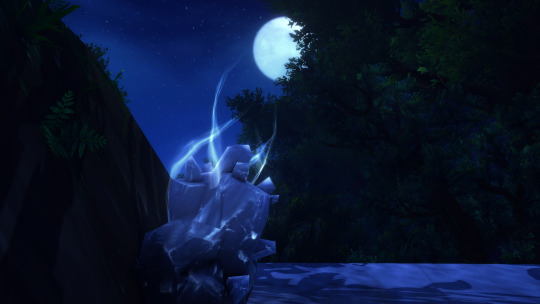
Earth
While Elune seems to be more distant from the element of earth than its counterparts, it is interesting to consider her manifestations that appear in traditionally earthbound mediums.
The first is Elunite Ore - ore in general being a naturally occurring rock or stone with valuable minerals inside. Elunite is described as being a fine material to work with, and directly blessed by Elune herself. The nature of Elunite is unclear; we do not know if it is an ore that is blessed by the goddess after its formation, or if Elune has a hand in its creation within the earth. It is not a usable material by miners and blacksmiths, perhaps implying that crafting with Elunite is a rare technique known only to select artisans, Elanaria (the questgiver) being one of them. It could also be that the privilege of shaping Elunite requires performing an act in defense of the goddess’s domain; as Elanaria tells us that in order to make our weapon, we must slay a satyr corrupting a moonwell, and defeat the shade of Elura who has cursed herself to guard her shipment of Elunite ore beneath the waves for all eternity.
The next earthly manifestations of Elune come in the form of gemstones, which traditionally find their origin from “deep in the earth, brought to the surface by explosions of molten rock.” Some are also “crystallized slowly from hot fluids and gases, formed from liquids filtered into cracks and pockets in rock, formed when rocks were heated and pressurized by earth movements, and recombined to form new, different minerals.” It is unclear whether Elunian gems are created similarly, or whether they are perhaps crystallized magic of some kind. As mentioned in the section of Fire, the Ancient Vortex Runestone was said to produce gemstones that Elune bequeathed to her followers here to defend themselves with. Additionally in Winterspring, there is an old altar that once housed a precious relic called the Gem of Elune that allowed direct communication with Her, and through which she “channeled her infinite wisdom.” In Outland, there are also rare jewels called Stars of Elune that can be prospected from various native ores, and dropped by random enemies.
In the Legend of Elun’Ahir, the goddess is said to be one who gifted Eonar with a branch of G’Hanir, a Mother Tree that once existed inside the Emerald Dream. After Aman’thul ripped it from the earth, its roots still grew below ground, nourished by Eonar’s tears: “Below ground, the roots fed upon the tears of Eonar and grew strong. The war was long, but in the end, the titans claimed victory. And Eonar was pleased, knowing Elune's legacy would endure. It is said that much later, as the world entered a new age, mysterious guardians arrived who dedicated their lives to protecting the roots.”
There are also several flowers said to be touched by Elune. One grows in the shadows of Duskwood, called Elune's Grace, which glows with the intensity of the moon and attracts wolves to its location. The flowers required to craft various Blossom Crowns during the Lunar Festival supposedly hold a strong connection to the goddess as well, imbued with a "solemn peace," "Elune's might," "happiness," and "great fortune." Myrael Lunarbloom also wields a staff whose flowers bloom during this time of year, greatly empowered by a moonwell pilgrimage ritual. She even says, "Flowers flourish under Elune's light. She was always known to cherish them."

Air
The Eyes of the Earthmother tells of the goddess’s early mythological origins, and her sphere of influence includes both water and wind. It seems that Elune (Mu’sha in this story) works with the wind most commonly as a means to communicate, and to deliver thoughts, words, and feelings. While the Earthmother slumbers, Mu’sha’s powers were said to be diminished, and she could no longer harness the winds' power since they “whipped up in storms and blizzards.” She is also described as “sharing secrets” with the winds, later sending upon them a plea to the Earthmother. Eventually, the Earthmother is able to find her way back to Mu’sha, because “the winds pulled at her hands, and guided her swiftly to find her Sun and Moon.” After the Earthmother’s sacrifice, Mu’sha pays homage to her by carrying her last words on the breeze for the tauren to hear, as well as setting the winds across the tides so that her voice could always be followed. Mu’sha’s favored weaponry was also said to be the bow and arrow, the efficacy of which is highly dependent on wind flow. Her movements are described as “quick as the wind,” and when her brother, An’she, is severely wounded, she calls upon these forces in an attempt to heal his injury: “Mu'sha tried to bind her brother's wound with water and wind, but no matter what she did, he continued to bleed.”
An in-game connection between Elune and the realm of wind is from a side quest in Darkshore just following the events of the Cataclysm. Sentinel Selarin, at the Auberdine refugee camp, leads the endeavor to eradicate the Twilight’s Hammer wind elementals overtaking the ruins of the town. An arduous process that requires an intricate solution, as the Twilight’s Hammer can continuously resummon the elementals at their command. In order to put an end to this, the elementals must be “slain;” after which we take their bracers, thought to be physical bindings anchoring them to this plane. The way to stop this cycle once and for all is to place the bracers into a moonwell. This act is said to not only prevent the elementals from being resummoned, but completely destroying the bracers as well. While this is not said to “soothe” them like the Orb of Elune, this seems to accomplish the same goal of freeing the enslaved elementals and the remaining Kaldorei.
While not a manifestation of elemental power per se, Elune’s influence upon the winds is also demonstrated in priestesses who channel her power through song; as well as relics like the Chimes of the Moon in Tel’anor: “The Sisters say that Elune sings a song, notes pure and beautiful. The Chime does not ring often, but when it does it is the same note as the one She is singing.” During the War of the Ancients especially, the strengthening magic utilized by the Sisters was invaluable to the war effort, notably through battle chants: “Then, another welcome surprise—chanting came from the center of the advance. The Sisterhood of Elune, resplendent in their battle armor, strengthened the fighters further. Day might have held precedence at the moment, but the priestesses’ rhythmic singing literally fed the nocturnal warriors. It was as if the moon herself suddenly hung over the host.” (Demon Soul, Ch. 8)
While we may think of this magic as under the strict purview of the elementals, it has been said that "Elune’s true nature is not fully understood," and the breadth of her power and influence may be even more vast and complex than initial impressions.
#longggggg long post#i'm so sorry#anyways#cool instances of Elune manifesting in elemental type things tm#world of warcraft#wow#elune#elements#cosmology#spirit
11 notes
·
View notes
Note
Wait what all did Naga do aside from the Tiki thing?
Naga has done a lot of things across the various Archanea games! the Tiki thing is the big one I take issue with, but it's not the only thing she's done.
A (Reasonably Comprehensive) List of Naga's Achievements:
Led the Divine Dragons in the war against the degenerating Earth Dragons after they refused to become manaketes and became feral. At the end of the war, she ordered the Earth Dragons be sealed in the Dragon's Table and appointed Medeus, the prince of the Earth Dragon tribe and its only embodied survivor, as its guardian.
This one is a mixed bag. On the one hand, she went to war to protect both dragon and humankind, since the rampaging Earth Dragons probably would have caused unfathomable damage and potentially wiped out the other tribes and Archanea's human population if left unchecked. The Divine Dragon tribe was nearly wiped out in the war, which shows just how potent the threat was.
At the same time, appointing the last survivor of the defeated tribe to guard his peoples' tomb for eternity feels pretty callous. Medeus was the only Earth Dragon who adopted a dragonstone and become a manakete, which is why he didn't degenerate with the rest of his tribe, but living with the constant reminder of his peoples' death, watching mankind abuse and oppress the remnants of other dragon tribes after what they went through to ensure mankind's survival...it's not too surprising that he eventually snapped.
Fearing that Tiki might degenerate despite her power being sealed in a dragonstone, consigned her infant daughter to a magically induced coma and entrusted her to Bantu's care, along with the dragon-slaying Falchion.
This is the one that gets me. Falchion's original resting place being the same as Tiki's has Implications along the same line as giving Duma a Falchion before exiling him with his sister. There's only one reason to put those two things in the same place, especially since the Binding Shield used to seal away the Earth Dragons was hidden elsewhere. Also, Tiki's sleep was supposed to be endless: she wasn't supposed to wake up at all. Bantu eventually took pity on her, after a millennium of lulling her back into that sleep when she woke to nightmares, and let her experience the world.
Following the destruction of Thabes, fought both Duma and Mila for nine full days and eventually emerged victorious; as punishment, exiled both of her former friends to another continent, gifting the Kingsfang Falchion to Duma before their departure in the event that they should degenerate.
This one reads as an attempt at mercy. Duma attacked Thabes and in three days reduced a bustling human city to rubble, and Naga was pretty understandably horrified by that. When she tried to punish him, though, Duma's sister -- who had not been involved in the Thabes incident -- came to her brother's aid to try and save him, though she wasn't able to tip the balance in the fight and eventually both were defeated.
Given how recent and raw the events at Thabes were, I would not be shocked if humans -- survivors of Thabes, people of nearby settlements, anyone aware of what had happened -- were clamoring for Duma and Mila's immediate executions. And that makes sense: Thabes was gone at that point because Duma decided that humans were too powerful, so what would stop him from doing the same again, to someone else? But those were not just Naga's allies, they were two of her closest friends. How could she bear to kill them? Exile seemed kinder: it put the humans' minds at ease, since Duma would not be a threat to them anymore; but it also let her friends survive, even if she would never be able to see them again.
Along with eleven other dragons from other tribes, granted her blessing in the form of a blood pact and the Book of Naga to Heim of the Twelve Crusaders, allowing them to oppose the Loptyrian Empire and its emperor Gair XVII -- who, in actuality, was the Earth Dragon Loptous possessing the human who inherited his bloodline.
Again, this one's a bit of a mixed bag. Loptous escaped the downfall of the Earth Dragons, not by becoming a manakete, but by making a blood pact with a human and separating his soul from his body and binding it in a book: the Loptous Tome. Anyone who inherited his unHoly (Major) Blood would, upon coming in contact with the Loptous Tome, become his new vessel, allowing Loptous to found an empire and terrorize the humans he loathed over the course of seventeen generations in about 200 years before Naga realized what was up. Something needed to be done about him, absolutely, and Naga rallied eleven other dragons make that happen.
But what she made happen...was giving her Holy Blood to a human, along with a powerful weapon in the Book of Naga, before leaving everything in the hands of humanity. She probably thought this was the best thing to do in the situation: when dragons get directly involved with human affairs, it tends to end badly (see the whole thing with Thabes). So she gave humans the power to help themselves. And because of that lack of direct involvement, it took another fifteen years to bring down the Loptyrian Emperor -- during which time a lot more humans suffered, including the innocent people who were living in the Empire and who were forced from their homes and oppressed by those who came after.
Gave her blessing to the First Exalt of Ylisse to seal Grima, and a millennium later unlocked the true power of the Falchion so that Chrom, descendant of the First Exalt, could oppose the Fell Dragon after their resurrection.
Again...kind of a mixed bag? On the one hand, we're told that Grima would have destroyed the world if they hadn't been sealed away; on the other hand, it did lead to a thousand years of conflict between the eastern and western nations, including at least one attempted genocide on the part of Chrom's father which he dubbed a 'crusade,' thus implying a religious connotation and making it highly likely he did it in Naga's name.
Naga's not perfect, but it's also complicated. She did a lot of good, but also caused a not insignificant amount of harm, up to and including putting her infant daughter into what she'd intended to be a permanent magically-induced coma which has left Tiki dealing with what amounts to magically-induced narcolepsy a full 3,000 years later. But she did it all because she thought it would cause the least harm to the fewest people. And I respect her for doing the best she could.
#answered#anonymous#fire emblem#naga#human politics are complicated and ever-changing#how is she supposed to keep up
16 notes
·
View notes
Text
I had a friend with whom I had like the craziest 3 am convos, now we're drifting apart so I'm gonna like document some of that weirdness, some jokes
1. Universe was created last Thursday
2. Peppa pig is 2m tall

3. I classify my memories by places, not time. Time isn't linear it's geographical
4. Ego finished before it could fester, the universe doesn't allow me
5. From the depths of Mushroom kingdom, emerges a man with a moustache so long
He's got a plan, he's got a scheme
Warrior, wario the money making Machine!
6. Will he cry, a broken man for all he has lost? Will they live or will they roam about with their hearts dead and brains shrieking?
7. Never be vanilla. Always be so extra and dramatic that you put Ursula to shame

8. We could just be immortal sentient jellybishes, floating in the ocean all day, but nooo
9. Rodrick from the live action movie is way too fine

10. A: I don't have friends
B: wait what about m- (starts fading away)
11. Confused OONGA BOONGA intensifies

12. I want to pour mouthwash on my eyes
13. A: Haha you're so old.
B: old, ancient, a dinosaur, even.
14. I pity myself, an eternal doormat who keeps trying to help people despite being ignored by them.
I'm a beta male, sonic
15. A: hey come onliiine
B:Who dares summon me, The Great Naga, king of the serpentssssssss
16. I broke into a children's park to play on the swings, I'm a criminal
17. Without even a semblance of awareness of any conciousness
18. Never feel guilty for eating chocolate
Feel guilty for being alive instead!
19. Thanks bro, you keep me undergrounded
20. After everything that has happened, if I don't get in my favourite college, I'm gonna be so pissed off that even the Gods will worry. The simulated Matrix should be sweating rn. They better not distract me.
21. I forget I'm alive sometimes
22. How can I sleep when the world is briefly magical for a moment which seperates the days? ✨
23. Haha suffer peasant
24. A: i grow, not grow up
Cosine so fine Constantine
Always alone, post Malone, Sylvester Stallone
All these rich people always act they busy
All I ever want in my life is pu-
I'm sorry, I got carried away, i don't where that came from

But like there's so much symbolism in this ryt, socioeconomic disparity, immaturity and-
B: Yea the pussy is a metaphor for how you were in a dark cave in your life
25. Mongolian throat singing ensues
26. Let's lie back and stare at the stars as last of the lights are put out
27. Mike wazhousekey

28. Ye have been blessed, kill some people in your dreams
29. I wanna die while somersaulting into the mouths of sharks in a lava pit volcano

30. A: my neck hurts so bad
B: want me to break it
31. Why am I like this?
When did I become like this?
32. You can feel the 12 year old girl energy from the screen
All my friends have personality of a toddler
33. Being buff and anxious is wayy better than being anxious
34. You're one sarcastic and a pleasant funny chap good sir
A hoit a toit
35. The theological conclusion to an eternal saga
36. And her skin the colour of coffee but only with milk because she was white (talking about how there were little coloured people in standards of beauty thing)
37. Atleast you try, my beloved
38. A: do my laundry
B: here have monekys
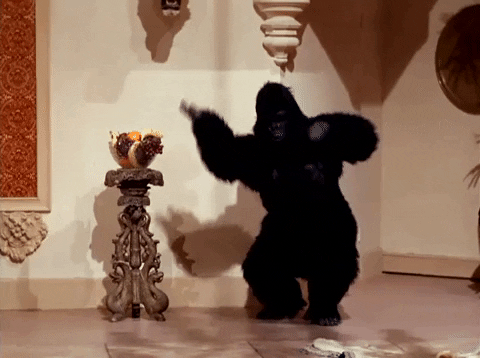
A: ...
B: special helicopter swings for shirts too
39. That attention seeking, two timing bubonic barnacle rat

40. There is no gender
There is only cockroach and those too filled with fear to face it
Anyways they have their own whole life and they seem happier without me so Saying goodbye i suppose haha sed lyf
2 notes
·
View notes
Photo


That Moment of Emotion ❤️
#chaysam#chaysam wedding#samantha ruth prabhu#naga chaitanya#samantha akkineni#these two pictures tell a happily ever after of their own#eternals thanks to this cutest couple for bringing back my faith in love and fairytales#this entire family is blessed#touchwood touchgold#wishing them happiest lives ahead
81 notes
·
View notes
Text
The mythology of the Siren, Mermaid, Water Spirits & Mami Wata and it’s origins within black feminity.
Today I had to listen to other another black woman rant about how mermaids/sirens/mami wata are evil low key. So this educational post was born in response.

Did you really think the divine essence of the black feminine wouldn’t protect itself ? That energy exists for a reason. Suddenly it’s evil, to have teeth and protect yourself from predators. Water is a precious resource. You will be tested to see if you are deserving of it or not. Also these spirits will defend natural resources so they don’t get fucked up by human greed.
It’s common for some places in Africa for people to offer the Sirens/Mami Wata/Water spirits or make an offerings/contracts with them in order to use the resources on their land. It also keeps the white ppl away too because they cause so much trouble.
Sirens are also associated with being the killers of children and men, but often this is completely misrepresented intentionally.
Men fear the power of the siren because she can override the patriarchy at core and can completely unravel them. The orgins of many water spirits lie in matriachal societies, temples divine feminine and motherhood. This is why temples and sacred magikal knowledge was intentionally destroyed and stolen, especially to empower the white patriarch.
Sirens are also described as thiefs of children and child killers. Sirens have been known to kidnap kids who were being abused or have were murdered near water and take them to their kingdom to restore them.
Sometimes the child returns, sometimes they are not. However in general they are big on kidnapping people, mostly women and giving them powers, if they decide to return. The idea of them eating and killing children, was a lie perpetuated by Greeks to cover up some truly horrific acts. Unfortunate these false accusations have been allowed to continue to perpetuate.
If a siren is acting in a predatory way, there is a reason why as their energy as been disturbed. Sirens are natural guardians.
So the real question is . . . what did you do ? Did you destroy their habitat ? Abuse a child or a person ? Commit an egregious act against a woman ie rape/murder etc ? Disrespect a sacred place, the land, the seas or rivers ? Steal precious resources that weren’t yours to take ?

These sacred traditions are more than just deities, spirits and our ancestors. All forms of ATR are access to our spiritual mind state as an entire community. When you move in Vodou, you can sense the whole of black consciousness and all of our problem spots, specifically areas that need healing.
Oxum-Oshun, Olokun, Yemaya, the Mami Wata, La Baliene, La Siren, Met Agwe, The Simbi - these are all spirits with a connection to waters. Water is life and has always been inherently associated feminine energy. I’m not going into detail about all these cross connections but let’s chat about La Sirene, specifically.
La Sirene, Queen of all Mermaids is more than just a powerful sorceress and queen of song/music and dreams, she is also a keeper of secrets an a guardian of sacred memories & knowledge.
Many of the souls of slaves, from the Transatlantic slave trade that were thrown off the boats into the ocean are her children, citizens and warriors now. She comforts them eternally & they live in paradise. That doesn’t mean all of these souls are at rest, plenty continuously ask their mother if they will be avenged, especially the young children. She also has a close connection with the Indigenous Taino. The isle of Hispaniola also known as Haiti (Ayiti) & the Dominican Republic is her most known domain.
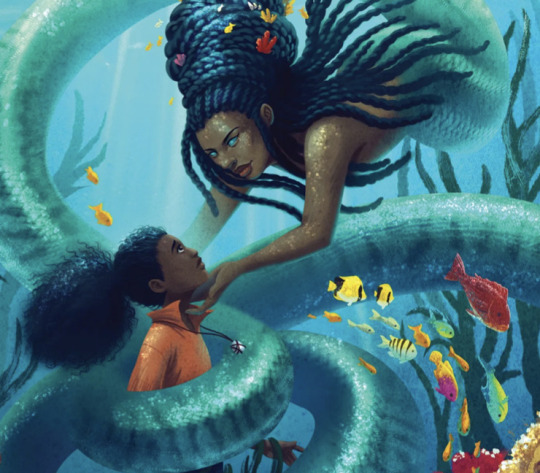
Let’s not act like slavery and colonization was a cake walk. Rape was common place and mermaids, water spirits offered African and Indigenous women protection and power over men. They became demonized overtime for their hypnotic powers and killing men, who often overstepped their boundaries. Women could leave offerings to these spirits, work or commune with them and be quickly avenged or gain great power and wealth. All of this was threatening to the white patriarchal standard.
La Sirene’s presence in Haiti and other merfolk tales that float around the Caribbean/West Indies, is not without purpose. She has ties to many people and many different cultures. Her sacred symbols are global. This is why I speculate she is much older than people think. La Sirene, is a fairly young evolution. She clearly has ties to much older things. Her older names might have been lost but she has evolved, to save her self and also document other forgotten elements of history in the process. There are those who speculate that La Sirene is the embodiment of a cross mixed culture, the evolution of Indigenous & African water spirits combined, due to the excess trauma of colonization and so the Mermaid Queen was born. Others will argue that she is the Orisha Yemaya but a newer avatar of her. I hate to argue semantics but I will say this, she exists and her presence is felt to this day, all around the world.
La Sirene is often depicted as a mulatto woman with eyes like the sea but if you have been blessed to see her in dream state, she does appear sometimes as a brown or dark skinned skinned woman of possibly mixed Indigenous/African ancestry with glowing hypnotic eyes. Alot of her older depictions, deal with colorism and slavery, but as things have grown in the modern world this imagery has begun to change. However mermaids, are known for their shapeshifting powers - to truly behold her true form, is a gift reserved for the rare few.
As a keeper of the mysteries, La Sirene also access to many forgotten things in the black subconscious. The element of water is an intensely psychic sign. Water is her domain, and what is the human body 80% of? WATER! The truth does not hide from her hypnotic eyes. This sacred connection to water and her essence, also means you can track forgotten elements black history and connect to other deities/cultures who’ve had contact with her & her whole court or other black water spirits as a whole. So let’s take a short historical trip down memory lane.
The Greeks & Black women. Sirens, Aphrodite, Sibyls and other Children of Water 🧜🏾♀️
The deity Aphrodite/Venus is of Grecian and Roman legend.
A little known magikal fact is that Aphrodite/Venus is half siren. She is a child of the water, she was literally birthed this way after Uranus got his balls cut off & thrown into the sea. Much of her Venusian influence and powers of love and beauty come from this element. Now my Mambo doesn’t like mentioning it but Aphrodite, is tolerated by the oceanic court of sirens/mermaids. Any child of water, falls under the domain of the queen. La Sirene has a sort of strange fondness for her and so does Aphrodite for her. However this doesn’t mean they are best friends. It’s tentative friendship at best and comes with some perks. Aphrodite works quickly for children of water sirens and often will send mermaids to her devotees who misbehave. She has deliberately placed me around her people have pissed her off, to cause mischief. She’s quite petty but also very generous. I won’t go as far to dare and say she is in the queen’s court, but she does curry favor with the queen. Being born of water, her half siren/mermaid influence has definitely attributed to legends of her beauty in myth but also her treachery with men 🧜🏾♀️😂. She clearly also has some sort of homesickness for the world underneath the water, because many of her offerings are gifts of pearls, kisses, sea shells, beauty products etc. Anyone who serves the Mermaid Queen knows the meaning behind those gifts. If you’re a black gyal with water or siren energy and decide to work with Aphrodite, do it! If you ever irritate her, the least she’ll do is give you pimples and fuck up your skin, she won’t have the full power to completely fuck up your love life like she does with the white girls. And let me tell you, she has completely ruined some white girls lives by giving them terrible lovers or men.
The trident 🔱 is known for its connection in Greek and Hindu cultures. However La Sirene or other African water spirits are depicted carrying it, which is largely ignored in the occult world.
You can track the trident in Hinduism, with the serpent spirits, the nagas or Lord Shiva but let’s focus on it’s Grecian connection. The usage of the trident and Poseidon, even in mainstream society today is associated with him. This lets us know there is a connection between the mermaids, merfolk and La Sirene/African water spirits. Poseidon’s trident was rumored to made in Athens by the Cyclops - this is the city of Athena. So now we can track an element of black history all the way to Poseidon & Athena. Keep that in your thoughts we’ll come back to that later.
Tridents were also used ceremonially in Africa & India as well, as scepters, tribal weapons and religious symbols.
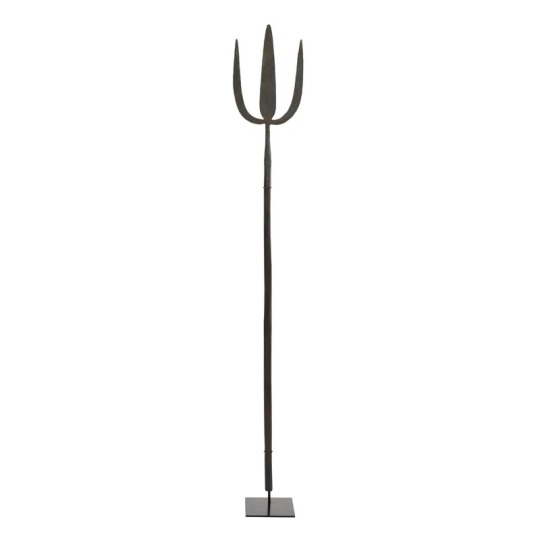
They were also associated with the sea faring people and fishing. It’s highly likely the origins of the trident are cross mixed between these two societies. Indo-African relations, go back to the Bronze age and the Indus Valley civilization. Which means traveling over by sea to reach each other was necessary. There is historical evidence of African millet being found in a Indian city Chanhudaro, including a cemetary or burial ground for African women. Maritime relations between these two groups existed before Grecian & the Egyptian Ptolemaic dynasties.
Now of course there are some deranged historians that will try to whitewash history and say the trident has its origins from the labyrs but the Ancient Greeks & Africans/Indians interacted regularly. The trident also looks nothing like a labyrs, which is quite literally a double sided axe. This is one of the more painful obvious pieces of white washing and historical revisionism.

Regardless, the trident is associated with water, ceremonial/religious purposes, fishing, battling in the coliseum and the symbol of power for a few African, Black diasporian an Hindu deities.
🧜🏾♀️ Oracles & Sibyls
Some sibyls/oracles were known to be African prophetesses/Mamissi to the Mami Wata/Sirens in Africa, some were stolen or captured by Greeks or Romans, sold into slavery and made to be oracles, some of whom became quite famous in legend. Their connection to these water spirits, is what gave them their gift of prophecy. Not every sibyl or oracle was African but SOME were. This lead to the sharing and theft of sacred knowledge. It’s likely these women shared this sacred information, with their colleagues, some whom may or may not have been enslaved or kept in these temple and likely this information was traded, for their freedom, power or money etc. This gave way to the usage of sacred spirits and magick being used by men. A great example of this is the snake spirits of the genii, genius spirits (not to be mistaken with genies) and which then evolved into a diluted lesser energy in Greek society being known as daemons (not to be confused with goetic demons) Instead of a woman commanding these specific energies/spirits, the patriarchs decided that these specifics powers were only worthy of being used by men. These spirits were whitewashed, adopted into their religious practices and said to only be given to men at birth. No woman was allowed to possess them anymore.
🧜🏾♀️ The whitewashing of Medusa & Lamia.
In mainstream society these two women stories have been white washed but also to hide a very shameful history and narrative. These two were beautiful women, in older stories of black black mythology were known to be black and they were children of water & daughters of the powerful water spirit/snake/siren divine mother/feminine goddess.
Medusa was raped by the GREECIAN GOD OF THE SEA, POSEIDON and Athena covered it up, refused to avenge her and punished her by making her ugly to everyone. It’s speculated in several magikal circles that the snakes in her hair were actually dreads, due to their lack of understanding of black hair and also allegorically might have been a reference to her devotion to the fish or water snake, great mother goddess. A child of the divine feminine, mother goddess was assaulted in a temple by a man and a woman covered it up & celebrated it.
Let’s start there ... cuz this story says a lot! It’s one of the first historical cases in myth that really documents the issues that surround the black feminine specifically and it was intentionally whitewashed. Then to add insult to injury, Athena made her hideous to all men and her chopped off her head and used as a symbol of protection but also a subtle sign of disrespect to the fullest. This still goes on to this day.
In fact ALGOL, the demon star, which is considered to be strongest protective magick talisman in the occult world today is the HEAD OF MEDUSA. The child of water! BITCH! This energy is invoked constantly and the spirit of medusa is never allowed to rest.
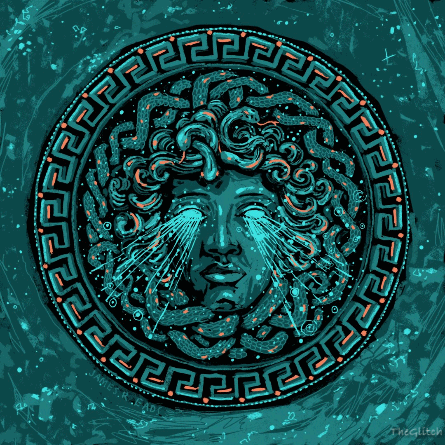
However these egregious acts did not come without a price. Athena at time was a goddess of fertility. However desecrating a child of water or the sirens, is seen as an attack by the divine feminine and can will cause people to be afflicted with fertility and other mental health issues as well. This is speculative but it’s also likely that after this they were constantly visited by droughts, floods or repeating issues with water sanitation & purity after this. Lowered fertility rates and miscarriages might be more prominent, for Athenians and Athena devotees & likely continues to this day.
Devotees of Athena may also develop severe issues when it to their mental health because of this connection. They completely lose touch with their feminine energy and become extremely misogynistic after continued work with her.
Not only did Athena, cause Medusa to be seen as hideous throughout the land but she celebrated when she was murdered and proudly wore Medusa’s decapitated head on her shield. From the feminist eye this virgin deity/woman was extremely male identified and adhered to the patriarchal standard. She was tested by the divine feminine and failed.
Even more strange, Athena’s birth allegorically proclaims her essential character: her wisdom is drawn from the head of a male god; the bond of affection between father and daughter; her championship of heroes and male causes, born as she was from the male, and not from a mother’s womb. A dreaded goddess of war, she remained a virgin and a servant of the patriarchal society and remains so to this day. She is the misogynistic cool girl and very asexual at the core. In fact if you explore more of her mythos, it becomes very clear she hates women. I’m bewildered at how she has become associated with lesbians and the feminine at large, when it’s been very clear that she was intent on transcending her gender from the very beginning, but never managed to escape it.
To top it off, I’ll leave you with this quote from Aeschylus’ Oresteia by Athena:
“There is no mother anywhere who gave me birth, and, but for marriage, I am always for the male with all my heart, and strongly on my father’s side. So, in a case where the wife has killed her husband, lord of the house, her death shall not mean most to me.”
Queen Lamia was a said to incredible beauty who seduced Zeus, (a literal man whore) which as made Hera jealous. Hera cursed Lamia with infertility and insomnia. She went insane and is said to have killed her own children and ate them. Zeus is said to be the one who gifted her prophecy and gave her the ability to take out her eyes, so she would not be irritated at the site of other happy mothers.
She became associated with a child eating monster who was half woman and half snake, which ties into the Libyan snake cults. She was associated with phantoms, the shapshifting laimai or empusai and the daemon spirits.
Medusa and Lamia were Libyan by heritage and came from a place in Africa where temples to the water snake mother goddess & divine feminine were common before they were destroyed by invaders intentionally. These women likely had extreme gifts of seduction, mind control and other abilities etc. It’s highly likely that Queen Lamia used her powers of seduction, at the behest of her people to save them from colonization and was demonized for it. Zeus’s temple was in Cyrene in Lybia, so this is far more than an allegorical story. This may be a real life story that was disguised in mythos. Unfortunately deeper research into this subject has turned up many dead ends for me. It’s highly likely Medusa was a priestess of the the matriarchal Mami Watas or water goddess/snake spirits and was likely raped intentionally in Athena’s temple, as a show loyalty to the rising patriarchy by descrating the symbolism of the great mother and the divine feminine. This was likely an attempt to lessen power and status of the matriachal societies that existed at the time. Rape was common war tactic amongst colonizers and news of such disgrace would likely spread like wildfire. This also solidified Athena’s place amongst the male gods and gaining her their respect. Athena and her devotees went a step further to show their allegiance to the patriarchy, by stripping Medusa of her beauty supposedly and exiling her, then parading her decapitated head on shields, when going into battle likely with Libyan enemies.
This is just a brief explanation of a few horrific acts in history, which were whitewashed & explain why the essence of the black feminine has evolved to become more protective, predatory and fierce. She learned to defend herself. Now she kills those who threaten her.
Fun history tip: Usually anytime you see a snake in Grecian mythology, just know something got whitewashed, because the truth was really fucked up, made them look really bad & a black woman was there.
🧜🏾♀️ The black feminine is capable of more than you know.
Yes, mermaids/sirens/snakes & the mami watas can be scary at times but that’s what stepping into mysticism of deep waters is like. Water is capable of many things, it is one of the most powerful elements on earth. It can nourish you and kill you, and that’s the beauty of it really.
We should all be grateful the black feminine is so beautiful, fierce & scares the living daylights out of everyone.
You would be dead if it wasn’t.
#merwitch#black girl magic#mermaid#hoodoo#medusa#mami wata#libya#yemaya#la sirene#blackbloggers#Libya#trident#Poseidon#Athena#aphrodite#Venus#vodou#haitian vodou#olokun#orisha#african traditional religions#atr#dogon#greek mythology#black femininity#black women#black lesbian#matrichary#patriarchy#intersectional feminism
819 notes
·
View notes
Text


Baneful Ache (Kinktober Day #10 - Cockwarming)
Characters: Dio Brando x Reader
Word Count: 654
Summary: Which Dio finally lays his eggs in you.
Content Warning: n/s/f/w, afab reader, neutral pronouns, naga!dio cockwarming, stomach bulge, double penetration in one hole, oviposition, egg laying, slight bondage, threats of death
Note: Sorry for the inactivity. Short prompt is short as I get back into the swing of things but regardless, enjoy!

You were trembling just from feeling the slight brush of Dio’s hot twin cocks brush against your sobbing and oversensitive heat.
The aphrodisiac venom was through your veins, making everything spin and sending your nerves into overdrive, heat tingling through the crown of your head to the soles of your feet. The naga’s lower tail wrapped around your abdomen, holding you tightly as he lowered you down on his leaking cocks, a smirk crossing his plush lips when he was able to push just the heads in. You were already keening - he was too thick. Your logical brain was trying to ring the alarm bells but it was drowning in the pools of pleasure as your mate inched inside you.
Even if you thought you could take no more, when you were convinced he was buried to the hilt, you would jolt in surprise when you sunk lower onto his twin lengths. He smiled proudly at the bulge of your stomach, prominent as his heavy balls met against the back of your thighs. You tried to move, squirming and being too full of your lover but Dio kept you still.
“Patience, pet… you’ll cum too soon if you move and I won’t be able to properly breed you.”
“B-But Dio, I-I’ll die if I have to wait any longer!”
Your mate elicited a dark chuckle. Rather than reassuring his human lover that it will be okay, he couldn’t help but slightly stir upwards into your needy cunt and sigh with content, “Perhaps. But at least you’ll have the pleasure of dying on my cocks, my Y/N.”
“D-Diooooo~”
You whined and tried breaking free from your bondage, only for him to grip onto you a bit too tightly. He bared his fang and his fork tongue was peeking out of his lips as he hissed at your movement, “Disobey me and I’ll make you regret it. Now be a good little human and take it.”
That got you to shut up - however, your pussy squeezed around him, arousal shot through you from wondering how he would exactly punish you if you attempted to grind against the overwhelming fullness. But you didn’t want to test those waters. Dio was a powerful naga and he could easily snap you in two if he was so pleased. He was notorious for feeding off his human partners and using them as his little playthings. You had been so lucky to survive so long, even being blessed to hold his eggs. You didn’t want to disappoint him - so you bit your teeth and tried your best to not swivel your hips against him. You fought the urge to bounce on his girthy cocks when he would adjust himself.
He couldn’t help but grin widely at your shaky legs and labored breathing. After for what seemed like an eternity, Dio picked up your smaller body and midway, dropped you back on his double lengths. You moaned, arching your back and relishing in how in one instance, you were empty, and the following second you would be full again. Dio kissed and nipped at your skin, using you as a personal cocksleeve and smirking when he felt your inner walls clamp around him as your climax was fast approaching, ready to release. Just as you tumbled from the edge of your orgasm, the tips of his cocks kissed the entrance to your womb. His warm essence spilled inside. You waited in nervous anticipation as you felt the first of many eggs slip inside and nestled comfortably within the walls of your babymaker. Dio groaned, relishing in the way your cock was milking him for his brood, imaging your heavy stomach too swollen and stretched beyond any human capacity.
“Just a few more eggs to go, my dear.”
You shuddered violently as you felt the second egg push past.
And the possibility of dying from this powerful beast seemed plausible.
#my writing#scenario#kinktober 2020#not sfw#dio brando#sdc dio#i guess lol#jjba x reader#dio x reader#dio brando x reader#jjba#jojo's bizarre adventure#jojo#stardust crusaders
267 notes
·
View notes
Text
Indian Magical School of Witchcraft and Wizardry Headcanon #1: The legends of it’s foundation
I love JKR and her magical world, but she completely ignored the South Asian region and a culture diverse as India, which could have been a great background for magical population. So I took the matters in my own hands and created some headcanons like I did previously with Mahoutokoro. Hope you will appreciate it.
The legend and the history of the school is so very overlapping that it is sometimes hard to distinguish between what is truth and what is myth. However the story goes something like this.
When the First Emperor of Aryavarta (Ancient India) Daksha was given the job to bring all earthly prosperity to the world, he was assisted by Seven Sages. These Seven Sages were the seven stars of the Great Dipper Constellations, who were called: Marichi, Atri, Angira, Pulascha, Pulaha, Kratu and Vashistha. To other Interpretation, these seven sages were called, Atri, Agasthya, Bharadvaja, Bhragu, Kashyapa, Jamdagni and Gautama. These Seven sages were wise and learned an knew many supernatural powers that governs the land of man without their common knowledge. Emperor Daksha wanted to control the seven sages and therefore made relations with them by marrying off his daughters with Bhragu, Kashyap and the sons of other sages: his demand was to have their power to his disposal only. The seven sages could do nothing, as in the Law of Dakshraj, harming or betraying the Kutumba (relatives and in-laws) were considered High Treason.
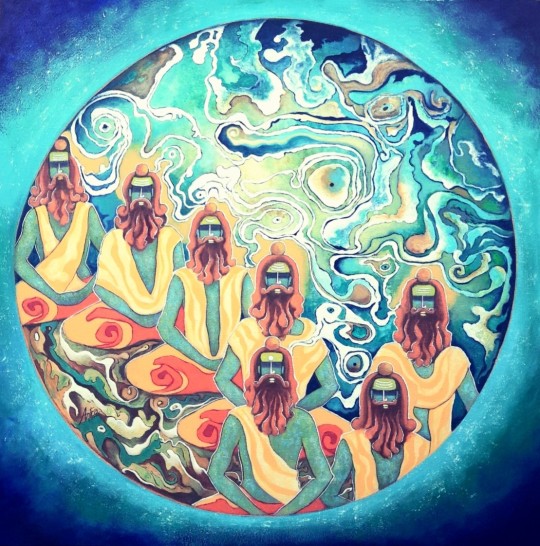
But the sages being the wise and kind men they were wanted to spread the greater knowledge of supernatural powers to the common man in order to help them understand their infinite potential. So they started to sought resources from the sages who were considered “outcasts“ in Daksha’s rule for learning about the end of things (because Daksha wanted his kingdom to be eternal, these concepts were forbidden). One sage, named Dadhichi came to help the Saptarshi (the seven sages) and instructed them to journey southwards to the door of the Yama (the God of death). It was shocking enough for the sages, but one of the sage: Agasthya or in some other texts Marichi agreed to journey southwards. He bid his colleagues farewell and told them not to look for him and return to the capital; if their calling is true there would be a day they would meet again.
when the sages returned, they found themselves in a chaotic position. Daksha had insulted his youngest daughter and her husband in the front of the Royal Court and to protect her honour the youngest has self-immolated. The Husband of his youngest daughter was Shiva, the God of Destruction who was not worshipped or even mentioned in Daksha’s kingdom as something “unholy”. Although the sages did not mention Shiva in Daksha’s presence, but they knew that the Creation cannot last forever and to exist, it must always be destroyed and transformed. Thus when the sages could not convince Daksha to ask forgiveness from Shiva, they publicly renounced their special status and that of their being the Princes Consort and left the palace forever. Later Daksha was slain by the God of destruction Shiva in the crime of Pride and pushing his own flesh and blood to kill herself.
In the path away from the Capital, the Sage Agasthya appeared before the rest. The sages knew that it was not real Agasthya, but his astral projection. He did not speak but pointed towards the south, towards the deep forest surrounding a mountain that no human can cross. The sages understood that Agasthya had given his life to seek it. The sages, after thinking day and night, could think no other plan to reach the place, let alone establish a school there, because it was not ordinary mountain, but a Volcano. After great thinking, Bhragu, the master of Astrology came up with a plan and decided to summon Seven Celestial Planets and pray them to guide there. The Planets summoned were: Surya (sun), Soma (moon), Budha (Mercury), Shukra (venus), Mangal (Mars), Brihaspati (Jupiter) and Shani (Saturn).
The sages prayed for 14 lunar days and the Seven Celestial Planets were pleased with their dedication and each one promised one reward to the sages. The sages told them everything about their wish to build an establishment to teach sons of man about the infinite power of the universe, but they didn’t know how to go to the place Agasthya had instructed them to go.
After hearing everything the Sun said “I shall rise from the east, pure white on the blood smeared sky and my light shall point the way to the hallowed place.”
Then came Mars said “I shall follow the path of the sun and destroy every obstruction that stands on the way to put the standard of victory on the hallowed land I won in the name of the Sun”,
After Mars, the Moon said, “I shall call upon the sky, ask it to rain on the Volcano so that the lava solidified and creates ground for the building”,
after Moon Mercury said “I shall bring about such designs with my mind that no human has ever seen, A house that shall be marvelous and impenetrable to any ill-wisher”.
After Mercury, Venus says, “I shall give that design a habitable form, strengthen and beautify it with the igneous stones from this volcano”.
Then Jupiter said “Like my illusive body, I shall expand it to 1000 times greater, and bless it so that no occupant in this house ever experiences obstruction in learning and nourishment. And as the Eldest of the Planets, I name this house Vishakhtantra , a house where high magic spreads out like branches of holy banyan tree”

when all of the planets were done doing their jobs, everyone looked at the dark figure that lurked at the background, with a smirk in his lips. The sages asked why the last one, Saturn did not come forward and requested him to contribute. Smiling he said “illusive planets and sages, you are all brilliant but you have done wrong.” It evoked fear amongst the sages because Saturn, the God of Justice and Time is elemental to any establishment and angering him could be catastrophic. Bhragu asked Saturn’s pardon and asked him to correct them. Saturn smiled and said, “The mistake, illusive sages, was committed when you called us. You have forgotten that we are Navagraha (Nine Celestial Planets), not Seven. You have chose to ignore two and I know why. You fear that the North and South Node might Eclipse the Sun and Moon and chose to ignore them. But you have forgotten, they too have purposes and are deserving of contribution.”
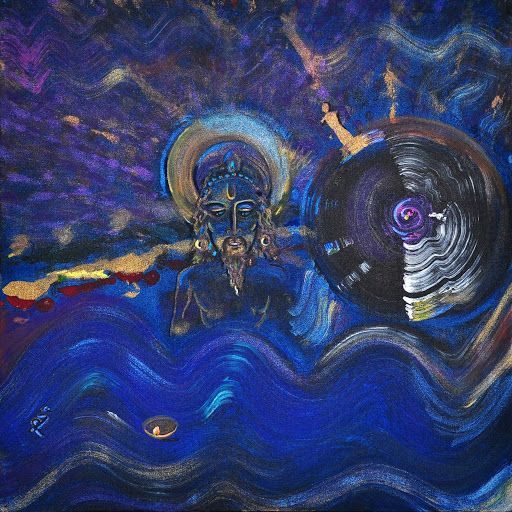
This statement angered Sun and the Moon. The great luminaries decided to withdraw if Rahu (North node) and Ketu (South Node) joined, but Jupiter mediated amongst Saturn, Moon and Sun. Jupiter, the Eldest planet vowed to keep the mischievous side planets in check and implored Saturn to return. Saturn then called upon Rahu and Ketu, and a great bodiless head appeared through a storm.
Jupiter came forward and addressed Rahu and said “This hallowed house shall be the home of instruction, of sacred knowledge. We the planets and sages have summoned you to contribute and correct the unjust. Are you willing to help us?” Rahu being the cunning demon that he is, said “yes, upon one condition. I want the highest place amongst all. I am a headless body and my wishes are infinite. It is the only way I would help you all.”
Saturn knew this would happen, he smiled and said “it shall happen” to everyone’s great dismay. It hurt Sun’s pride greatly but knowing Saturn, no one could protest. Jupiter and Saturn then turned to the great headless snake that coiled the entire mountain. When Jupiter addressed it, it said “Greetings my elders, I am glad that my other body, Rahu had his position acquired. But I am most perplexed because I could feel all the pains of creatures, demonic and divine who have been displaced for the creation of this place. Their souls will not leave the place in peace.”
Saturn came forward and asked him, “oh headless body, the giver of results of past life, lord of the isolated, reside as the Vastu Naga and the Bhitti (Foundation) of the hallowed place. Upon your great coil shall the institution stand and the lives lost shall receive the result for their sacrifice.”
With the Ketu entering underground, the head of Rahu had to choice but to reside exactly at the opposite side of his other body. Saturn grabbed Rahu by the hair and said “Sun the the highest light, Jupiter is the Highest Wisdom and none in the universe, not even me can exceed their position in the universe. So reside at your highest place, on the topmost towering peak of this place. I forcibly command you so that you can eclipse every form of mal-spirit and power from above.”
With that done, Saturn returned to the final place and said “and I, Lord of limitation, time and justice, mark the boundary of this place and veil it with the Tamas, so it could be hidden from the common eye.”
The sages were eclectic after the creation. The eldest, Atri said, “heavenly presences, you are the influences that govern the actions, fates and deeds of the world, would you be so kind to reside in this place as guiding principles so that we the Acharya (teachers) and the shishya (pupils) shall prosper in their ways.” Saturn called upon the sages: “so it shall be Illusive sages but do not disregard the shadow planets, Rahu and Ketu, who represent the base and the peak of the house also have the right to represent: I deliver the choice to you.”
“Very well“, said Bhragu, master of Astrology: “Since the shadow planets are unstable on their own, I assign them to the Two Intellectuals: The Head Rahu with Mercury, and the Tail Ketu with Jupiter.“
Thus formed the Seven Sacred Houses of Sapta Kula of Vishakhtantra.
Uttarashada (Sun), Anantasoumya (Moon), Punarvasu (Jupiter and Ketu), Bhadrapada (Saturn), Yajurmitra (Venus), Ksharagam (Mars) Rahavyasa (Mercury and Rahu)
#harry potter#harry potter headcanon#indian harry potter#11magicalschools#hpheadcanons#indian wizards#indian potterheads#astrology#india deserves it's own magical school
117 notes
·
View notes
Text
Anguism (GodNaga!Beej Lore Post)
This is something I’ve had in the works for a while. I wanted to expand on GodNaga!Beej’s lore, and the religion practices Scarabee would use. Please note that this is a false practice, created so we wouldn’t end up offending anyone who practices real religion when we talk about Scarabee. Everything you will need will be below the cut! Trigger warnings: Mention of blood, mention of violence.
Anguism- A religious belief system worshiping Betelgeuse/Beetlejuice, an eldritch abomination. Also known as a “God of serpents”
(Anguis = Snake/Serpent in latin since he predates christ)
Origin of Betelgeuse:
Born from the explosive creation of the second brightest star in the constellation Orion, Betelgeuse was the product of a spare fragment of the star colliding to the planet earth which had disrupted a snake den. Thousands of years later an earthquake shook the remains free from the rubble of the long-forgotten den. What was released was a horrific creature, half-man, half-snake.
In his search for purpose, the beast found refuge in cave systems where he resided for thousands of years that unbeknownst to him was rather close to where a small settlement of early humans would eventually reside. Revered for his strange shape, and his immense power it wasn't long until the locals had begun seeking him out for protection and prosperity.
In return for their praise and sacrifices, he offered the humans protection, and for centuries he served them. Night after night he would watch out for the members of their small town, returning children lost in the forest, blessing crops, and livestock. The people worshiped the serpent for generations, passing beliefs, prayers, sacrifice ideals, and the likes down from father to son and so forth.
As time moved forward and with the rapid spread of Christianity, the few faithful followers took to his shrine where they wrote everything they could in books, scrolls, and tomes. The history, and practice all were archived and stored in a small temple where worshipers would come to pray or leave their offerings.
Misfortune struck the village when they were attacked, raided for their ‘false God’, and the settlement was burnt to near ashes. All remaining members of the religion were taken by those who lead the raid, never to be seen again.
In a furious rage, the serpent emerges, thus begins a great wipe of carnage and destruction. The snake god had taken on a form even his most devout followers would likely have not recognized. Those who witnessed it had gone mad, or simply dropped where they stood, their minds not able to comprehend what they had seen. The rage took place for days, those who were ordered to try and subdue the monster lost their lives, like lambs to slaughter until the great beast settled after day three.
Shocked and appalled by the state he found his beloved village, he retreats, with the last of his strength he retrieves the books and scrolls and hides them away within his own temple, protected with the last of his magical ability before he collapses, only to wake seasons later bound in chains to a large pillar in the broken remains of his once-grand temple’s atrium, where he remains, locked and powerless for centuries, hidden away in the ruins of his only home, defeated and left with the weight of guilt of his followers' lost lives and his inability to protect them.
Practice Belief:
The main focus of his belief is based on trust, blind obedience, and sacrifice. In return, you receive a benevolent God, and those who earn his favor will be gifted with immortality, or an afterlife to serve him.
Worshipers:
Anyone can worship this God, but the hidden knowledge often times makes it nearly impossible to hear of or practice so the religion is quite small. Worshipers gain favor over time in their trust, tasks given to them by the beast. Sacrifices and gifts are also required. This ‘level’ makes the majority of his worship. Most followers of his fall under this category. In basics, you simply serve him, and in return, he will help when called upon.
Devotees:
Devotees are a group of individuals that have earned his respect. These individuals are blessed with the ability to see their God first hand, or may be requested or summoned when he may need. He may telepathically visit these followers with insight to their future, if they are in danger, or other things similar.
Marked:
Also known as ‘priests’ of his religion.
Those who are marked have earned his highest favor. In a way, he has claimed them with a mark that will bond those marked with him forever. Those who are marked may expect eternal life serving him. Those who are marked would be offered the knowledge written in ancient times. Special powers would be granted, typically powers manipulating shadows, or altering one’s own body are gifted. “Priests” or those who are marked will be taught the serpentine language that is exclusively distinct to the beast. Only the most devout, trusting, and self-sacrificing would ever be considered to be marked.
Tools of practice:
Tools of practice are very aligned with an eclectic pagan. Divination tools and ceremonial daggers are primarily used tools. Presents and gifts from the beast should also be used in practice, including protective jewelry and collars from him. The use of alcohol is also strongly suggested, and nearly every spell, and offering to the serpent includes dark alcohols. Of all tools used it is important to note that intent, trust, and faith will always be the backbone of this religion. Those who cannot simply trust cannot worship this deity.
True magic versus spell working:
There is a stark difference between true magic, and spell working within this religion.
Spell working can be done within any level of this worship. Spell working would include making things like spell jars, candle magic, divination, offerings and prayer.
True magic is only accomplished by those with the serpent’s mark. Users of true magic are gifted from the serpent himself and typically have abilities that control shadows, or manipulate their own form at will.
Common historical offerings for Beetlejuice:
-Gold, jewelry, coins, money, jewels. -Small offerings of virgin blood. He was known for feeding directly from them or through small vials. -Livestock, raw red meat, hearty breads -Alcohol -Personal letters of devotion -Acts of devotion could be protecting those at risk, protecting and caring for the shrines, caring for snakes.
Common modern offerings for Beetlejuice:
-Dark alcohol. -Red meats and hearty breads. -Coins and special trinkets. -Acts of devotion include protecting those in need, caring for snakes, and if allowed visiting him, or communicating with or praying to him.
Common themes or repeating imagery:
-Snakes, crows, beetles -Green, black, white, gold -Elements of earth and fire -Bones and ash/soot -Mist/fog -Autumn -Bogs and open fields -Shadows -Broken glass/chains/broken stones -Old books -Dark blood like that found in veins -Things repeating in threes -Ouroboros
The mark
Being marked by the serpent God is something akin to a marriage but not in the traditional ideas. It binds you two forever, it shows both himself and the recipient just how much they mean to one another. The mark is given usually in private, a small ceremony between the two may be held, usually pertaining to drinking, sharing a meal, sharing some form of promises and then finally the mark is given when the serpent bites you and pours some of his own power into the recipient. The mark heals quickly and the bite leaves a very small marking of a snake on the skin of the one he marked, that spot will work as not only his vow to you but when either party touches the mark the other will feel a warm feeling spread from it. It can be used as a sort of built in security system that the God uses to warn the recipient of danger. Very few have ever been marked, he does not take it lightly. In current official lore Scarabee Shoggoth is the only surviving marked/priest, and in the past only three others had ever been marked who were taken away during the attack on his temple. He to this day does not know what happened to them, their marks have long since gone cold, and their life force had gone during his years of unconsciousness. He mourns them greatly and every 100 years on the anniversary of what he presumes are their deaths he pays respect to his lost followers.
Information about Betelgeuse/Beetlejuice himself.
Appearance:
His most typical appearance is as naga, about a 10 foot tall. His tail is thick and constrictor like, black and white stripes that are slightly iridescent in certain lighting, with black ventral plates. His upper body is large, he has quite a bit of muscle from the way he moves around, large arms, broad shoulders, and well defined back muscles. His chest is also quite strong. His stomach has a lot of muscle but a thick covering of fat that makes him look quite chubby. He has long black hair that falls down past his shoulders and chest, usually to rib length. Can be straight or wavy and messy. His hair is styled in a half shave with a few braids that are beaded with gold. His ears are pointed, he has two small black horns on the top of his head that curl in and back. He's got several piercings, and wears almost exclusively gold and emeralds. Around his waist is a black and white striped cloth that he can be drawn without.
It should be mentioned that he can control his form at will. He can make himself smaller, bigger, human, naga, snake, or otherwise strange monster form that is unfit for human eyes.
In his human form he is tall, similarly shaped as his naga form in terms of body size. He typically wears dark colors, favoring blacks, gold, and dark green or jewel tones. His hair is still long, coming to about his collar bone.
Personality:
Rough, abrasive, and more than a bit full of himself. He can be selfish and jaded, he's quick to anger, and he's quick to punish. He very much embodies the act first and ask questions later. He can be a bit quick to jump to conclusions and can be very hard to get to know. Can be quite a trickster, often cat-like and chaotic. He gets a sick rise out of terrifying newcomers just for fun.
Things to consider for self-ship:
Obviously this is completely open ended for you the reader/viewer/shipper to do whatever you wish with the story or ideas you have, but these may help you make some decisions!
He is meant to sort of have a pre-existing relationship with Scarabee. They are in fact some sort of romantically inclined. Proving your loyalty to Scarabee would likely bleed over to the deity over time. Self shipping with Scarabee and GodNaga!Beej as a poly deal is a common mode for sure, however, if poly isn’t your thing or you don’t want to ship with Scarabee at all, you could just as well meet him without Scarabee’s help. He’s open ended for the ease of the reader to write/draw/hc/or do whatever they want. It’s also important to note that while he is rough and abrasive, he is not incapable of feeling emotions like love, and lust and the likes, he us just far less likely to experience it than others might. He tends to get a bit confused by affection, and isn’t quite sure what to do with it, but it IS a massive ego boost for him.
Trivial facts:
-We nicknamed him ‘Snubban’ for “Snake Husband”. -He has a potent aphrodisiac venom. -He can and will give you a golden collar or bracelet if you don’t want to be marked, or just if you offer yourself to him. -Nicknames from him are typically akin to small animal names like “Rabbit” “Mouse” “Little Pet” “Lamb” etc. -He does in fact shed! Usually once a year, often gets real bratty and princess-like, making Scarabee come down to help him with the shed since it’s so itchy. -He usually stays within his temple, but he does in fact visit the estate as an extended universe character, and also has been known to simply venture out to see what humans are up to in his human form sometimes. -Scarafaggio and him would have crossed paths in their time on the earth. We’re still ballparking ideas on that. -My HC for his voice would be similar to Thresh from League of Legends. -
#Hax HCs#Lore Post#GodNaga!Beetlejuice#GodNaga!Beej#Naga!Beej#Naga!Beetlejuice#Snubban#Lore#Scarabee#The Conglomerate#Extended universe#anguism#blood#violence
32 notes
·
View notes
Text
Goddess Lakshmi—bestower of power, wealth and sovereignty

Draped in red saree, bedecked with gold ornaments, seated on a lotus, pot in hand, flanked by white elephants, the image of Lakshmi adorns most Hindu homes and business establishments.
Lakshmi is the goddess of wealth, fortune, power, luxury, beauty, fertility, and auspiciousness. She holds the promise of material fulfilment and contentment. She is described as restless, whimsical yet maternal, with her arms raised to bless and to grant. For centuries Hindus have invoked her thus:
Beautiful goddess seated on a chariot, Delighted by songs on lustful elephants, Bedecked with lotuses, pearls and gems, Lustrous as fire, radiant as gold, Resplendent as the sun, calm as the moon, Mistress of cows and horses — Take away poverty and misfortune Bring joy, riches, harvest and children.
The world may have changed, but the thirst for material comfort continues to form the core of most human aspirations.
Shri—the sacred name
The popularity of Lakshmi can be gauged by the fact that her sacred name—Shri. Shri is written atop most documents and spoken before addressing a god, a teacher, a holy man or any revered individual. The word evokes amongst other things: grace, affluence, abundance, auspiciousness, authority.
When the word is spoken or written, an aura of holiness is established. Whatever follows the word is imbued with divine blessing. Married men and women are addressed as Shriman and Shrimati as they have Lakshmi’s blessings to harness the wealth of the world to support family and sustain society. Ascetics are not addressed as Shriman as they have renounced worldly riches; unmarried men and women are not addressed as Shriman and Shrimati as they are still in preparation for the householder’s life.
Just as the word ‘aum’ is associated with the mystical side of life, the word ‘shri’ is associated with the material side of existence.

Widespread appeal
The practice of personifying the beauty and bounty of earth as a goddess was prevalent in all ancient cultures.
The Greeks had Core, the corn-goddess, who was known to Romans as Demeter. The Egyptians had Isis, Sumerians had Innana, Babylonians had Ishtar, Persians had Anahita and Vikings had Freia. Shri-Lakshmi is the Hindu form of the timeless mother-goddess who nurtures and nourishes all life.
In India, not only Hindus but also Buddhists and Jains adore Lakshmi. Buddhism and Jainism are primarily monastic orders that turned away from Vedic rituals and Brahmanical dogmas about 2,500 years ago. They, however, could not abandon this delightful goddess.
In the Buddhist Jatakas, there are tales of men and women who request the goddess Lakshmi to drive away the goddess of misfortune, Kalakanni. Images of Kubera, the pot-bellied yaksha-king and treasurer of the gods, who is closely associated with Lakshmi, adorn most Buddhist shrines.
In holy Jain texts, it is said when an exalted soul like a Tirthankara is about to be born his mother dreams of many auspicious things, including the goddess Shri. Symbols of wealth and royal power commonly associated with Lakshmi are auspicious to both Buddhists and Jains. These include: the pot, a pile of gems, a throne, a flywhisk, a conch, a fish, a parasol, nagas, yakshas, a footstool, a horse, an elephant, a cow, and the wish-fulfilling tree.

An ancient goddess
Shri-Lakshmi has a long history testified by the fact that her first hymn, the Shri Shukta, was added to the Rig Veda, the oldest and most revered of Hindu scriptures, somewhere between 1000 and 500 BC.
Considering her popularity amongst Buddhists and Jains, it has been proposed that her worship may predate the Vedic culture and may have developed independently before she was brought into the Vedic, Buddhist and Jain folds.
Scholars are of the view that initially the words Shri and Lakshmi referred to anything that was auspicious or brought good luck or bestowed riches and power. Later the two words were personified into two goddesses who eventually merged. Thus, Shri-Lakshmi came into being.
Fragmentary verses in the Shatapatha Brahmana, written not long after the Vedas, talks of the birth of Lakshmi from the mouth of Prajapati to provide the inhabitants of the cosmos food, clothing, shelter, and all things that make life more comfortable. She also offered wisdom, strength, beauty, luck, sovereignty and splendour—the good things in life.
Stories of Lakshmi first appeared in the epics Ramayana and Mahabharta, that were composed between 300 BC and 300 AD, a period that witnessed the waning popularity of Vedic gods and the rise of gods who offered moksha such as Shiva and Vishnu. Gods and demons fought over her and both strove to churn her out of the ocean of milk. As folk heroes such as Rama and Krishna were viewed as incarnations of Vishnu, their consorts Sita, Radha and Rukmini became increasingly identified with Lakshmi. In the Harivamsa, appendix to the Mahabharata, Manmatha, the god of love, lust and fertility, was described as her son.
The mythology of Lakshmi acquired full form in the Puranas, chronicles of gods, kings and sages that were compiled between 500 and 1500 AD. In them, the goddess came to be projected as one of the three primary forms of the supreme mother-goddess, the other two being Saraswati, the goddess of knowledge, and Kali or Durga, the goddess of power. Lakshmi was visualised both as an independent goddess and as Vishnu’s consort, seated on his lap or at his feet. Prithvi, the Vedic earth-goddess, became Bhoodevi in the Puranas and a manifestation of Lakshmi. In south India, the two goddesses were visualised as two different entities, standing on either side of Vishnu, Bhoodevi representing tangible wealth while Lakshmi or Shridevi representing intangible wealth. In north India, the two goddesses became one.
Images of Lakshmi started appearing around the third century BC in sculptures found in Kausambi, in north India, and on coins issued during the reign of the Gupta dynasty around the fourth century AD. She became a favourite of kings as more and more people believed she was the bestower of power, wealth and sovereignty. Separate shrines to Lakshmi within the precincts of Vishnu temples may have been built as early as the seventh century; such shrines were definitely in existence by the 10th century AD.

Fickle and independent
Nowadays, Hindus accept Lakshmi as the eternal consort of Vishnu, the preserver of the world. In her long history, however, the goddess has been associated with many other deities. According to Ramayana, Mahabharata and Puranas, the goddess Lakshmi first lived with the demons before the gods acquired her. She graced asuras such as Hiranayaksha, Hiranakashipu, Prahalad, Virochana and Bali, rakshasas such as Ravana and yakshas such as Kubera before she adorned the court of Indra, king of devas, the most renowned of Vedic gods. Cities of the asuras (Hiranyapura), yakshas (Alakapuri), rakshasas (Lanka) and nagas (Bhogavati) have all been described as cities of gold, Lakshmi’s mineral manifestation.
Within the Vedic pantheon, Lakshmi was linked with many gods, especially those associated with water bodies: Indra, the rain-god (bestower of fresh water); Varuna, the sea-god (source of all water); Soma, the moon-god (waxer and waner of tides). Indra’s wife Sachi was also known as Puloma, which is the name of an asura-woman suggesting entry of Lakshmi from the world of asuras into world of devas.
As the Vedic gods waned into insignificance around the fifth century BC, two gods came to dominate the classical Hindu worldview: the world renouncing hermit-god Shiva and the world affirming warrior-god Vishnu. Lakshmi was briefly associated with Shiva before she became the faithful consort of Vishnu-Narayana, the ultimate refuge of man. With Vishnu, she was domesticated. No longer fleet footed, she sat demurely by his side, on his lap or at his feet.
The association with many gods has led to Lakshmi being viewed as fickle, restless and independent. Sociologists view the mythology of Lakshmi’s fickleness as indicative of her cult’s resistance to being assimilated with mainstream Hinduism. Even today there is tension between the mythology of Lakshmi as an independent goddess and her mythology as Vishnu’s consort. Philosophers choose to view the fickleness and independence of Lakshmi as an allegory for the restlessness of fortune. More often than not, there are no rational explanations for fortune and misfortune. Good times come without warning and leave as suddenly.
Shri Vaishnava tradition
In the twelfth century AD, a new form of Vaishnavism called Shri-Vaishnavism evolved in South India. Like other Vaishnava orders, it visualised Vishnu as the embodiment of the supreme divine principle. However, this order was unique as it refused to acknowledge Vishnu independently. It insisted on the presence of Lakshmi beside him.
For Shri-Vaishnava scholars, such as Vedanta Deshika, Lakshmi is indispensable while approaching Vishnu. He represents righteousness; she represents compassion. She is like a mother intervening between a stern father (God) and an errant son (the devotee).

Maha-Lakshmi, the great goddess
In Tantrik texts, which were composed around the same time as the Puranas, Lakshmi acquired supreme importance. She was Maha-Lakshmi, the supreme goddess.
Lakshmi is often differentiated from Maha-Lakshmi. While the former is the consort of Vishnu and the goddess of wealth, Maha-Lakshmi is viewed as an autonomous entity, the supreme embodiment of the mother-goddess. When worshipped as Maha-Lakshmi, Lakshmi is not visualised as a beautiful goddess seated on a lotus, pot in hand, but like a virginal warrior-goddess riding a lion, much like Durga. This form of the goddess is especially popular in Maharashtra.
Ancient Pancharatra texts that adore Maha-Lakshmi consider her to be the root of all creation. In the beginning, they say, the cosmic soul—the unfathomable unmanifest Narayana—desired to create the cosmos. But he did not have the resources to do so. As he pondered over this problem, his dormant energy, his shakti, burst forth in a blinding light, manifesting as Maha-Lakshmi.
Maha-Lakshmi placed the seed of divine desire in the palm of her hand and unleashed the dynamic forces of creation until the three worlds took shape and all forms of life came forth.
In the Lakshmi Tantra, the goddess says: “I am inherent in existence. I am the inciter, the potential that takes shape. I manifest myself. I occupy myself with activity and finally dissolve myself. I pervade all creations with vitality, will and consciousness. Like ghee that keeps a lamp burning, I lubricate the senses of living beings with the sap of my consciousness.”
Lakshmi is the divine power that transforms dreams into reality. She is prakriti, the perfect creation: self-sustaining, self-contained Nature. She is maya, the delightful delusion, the dream-like expression of divinity that makes life comprehensible, hence worth living. She is shakti, energy, boundless and bountiful.

Excerpted with permission from Vakils, Feffer & Simons from the book Lakshmi: The Goddess of Wealth and Fortune – An Introduction authored by Devdutt Pattanaik.
36 notes
·
View notes
Text
Worthy
A Magic the Gathering fanfiction.

The two suns are burning down ever so hotly onto the city of Naktamun. Sweat runs down my skin in rivers. My breath, still labored, returns to normal only slowly. My muscles still ache faintly from the exertion.
But I don't care about any of that. At my feet lay my slain opponents; dissenters, who have dared to speak blasphemy against the gods and the God-Pharaoh himself. My ears are filled with the roaring cheer of the crowd, which is occupying the stadium to the very last seat; it's almost as if all of Naktamun had gathered here.
Finally. After ten long years, I've done it.
As I raise my kopesh high into the air, reveling in the crowd's adoration, I still can hardly believe it. After a long ten years of struggle, blood, sweat and tears, I have finally reached my goal. The weight of the now five cartouches around my neck is the final proof of that. Hadn't I been hardened by my training, I might have burst into tears of emotion right here and now. But that would only dampen the glory of this moment, and if there is one thing I would not want, I would be bursting into tears in front of the watching gods.
All five of them are here to witness this glorious moment. Cat-headed Oketra the True. Ibis-headed Kefnet the Mindful. Cobra-headed Rhonas the Indomitable. Crocodile-headed Bontu the Glorified. And jackal-headed Hazoret the Fervent.
Then again, it is no wonder that emotions are running high. Only the strongest and best achieve what I just have achieved. And by the mercy of the God-Pharaoh, I am now joining the ranks of those legendary warriors. My chest seems to burst with pride and joy as I watch Hazoret walking towards me across the red sand.
"Well done, my child."
The goddess's voice reverberates in my mind. Powerful. Strong. As befits a deity.
"You have passed the Trial of Zeal. With this, you have passed all five trials successfully, and thus have proven yourself to be worthy."
Worthy. The word echoes in my head. It is the culmination of everything a member of a crop is aspiring for. Only those who have proven themselves worthy will be granted blessed sleep, embalmed by none less than Bontu herself, until the God-Pharaoh returns, who will raise them so they may fight at his side. And only those who have passed all five trials will be granted that honor. The God-Pharaoh, who has created this world. The God-Pharaoh, who has in his wisdom and mercy created the five gods to watch over us humans, khenra, aven and naga. To fight at his side is the highest honor that can be bestowed upon anyone.
It's what I've trained for the past ten years. It's why I have meticulously honed my body and mind for such a long time, day after hard day. And today, my hard work is finally paying off. I will join the ranks for those glorious warriors who earned their place at the God-Pharaoh's side.
As Hazoret approaches me, the magnitude of the moment overwhelms me. I am overcome by humility and joy at the prospect of what awaits me. To be serving the God-Pharaoh himself once he returns… the moment cannot seem to come soon enough.
Hazoret towers above me. Lifts her two-pronged spear. My chest seems to burst with expectation. The occasion is so momentous that I cannot help to fall to my knees in front of the goddess. I close my eyes. A few moments later, I feel the pointy tips of the two prongs against my skin, one against my forehead, the other against my chest.
I am not afraid of what is to come. And why should I? After all, what awaits me is eternal glory at the side of the God-Pharaoh. I am about to join other legendary heroes resting in the necropolis.
"Eternal praise to the God-Pharaoh", Hazoret's voice echoes in my voice. "May his return come quickly."
"Eternal praise to the God-Pharaoh", I repeat. "And may we be found worthy."
And then the prongs pierce my flesh. A brief moment of excruciating pain. But then, I feel nothing anymore. A final smile curls my lips.
My God-Pharaoh… I am on my way…
Author's note: This story was a very spontaneous idea. It's the point of view of one of Amonkhet's inhabitants who managed to pass all five trials and be deemed worthy. What I want to get across with this how deeply rooted Nicol Bolas's corruption of the plane was. How blindly faithful he managed to get both gods and humans.
20 notes
·
View notes
Text
Where Fear Dwells
Naga, she’d prayed she’d never see such sights again--if two lifetimes destroyed by that horrid creature weren’t enough, it shows up again in the same guise, mocking her. Her father’s most trusted companion. Her father’s murderer. Twenty-two hours and thirty-seven minutes after discovering Grima’s arrival at what she thought had been a safe place, thousands of leagues from Ylisse, Lucina was able to think coherently. She was able to unlock the door to her room. She was able to take short, shaking breaths and prepare herself for war.
She nearly vomitted when she saw the smile twisting its way onto that monster’s face, the stiff shoulders of Mercedes just in view. Naga, save us all. How could this have happened---how could Mercedes....they didn’t know. The lump in Lucina’s throat grew larger. No one knew what they’d been through.
Fighting every urge to yank Mercedes from the classroom, Lucina quickly fled the scene--she wasn’t sure yet that Grima knew that she was at the monastery...though in all likelyhood, just as her blessed blood boiled with the presence of the fell dragon, the creature was already aware.
So she waits. Hiding near Mercedes’ dorm, taking every ounce of patience to sit, to wait--to not dive headfirst into what would devolve into a war on Church grounds. It’s an eternity before Mercedes returns, clearly worn from the encounter. With silent steps, Lucina places herself in the older student’s path, face hardened. Life or death. War would come--and they all needed to be ready.
“We need to talk.” ( @godsmercie )
3 notes
·
View notes
Text
No-Ah Grand Elders: Ev-En, Elder of Earth (Pathfinder 1st edition Quasi-Deity)
The No-Ah hierarchy is, at it's core, a bureaucratic gerontocracy; where age and station dictate the hierarchy. As such the eldest members of each elemental caste of No-Ah, the Grand Elders, serve as the oligarchs of their people. As proof of their authority, No-Ah who live long enough to ascend to grand elder status go up one size category (no larger than huge), gain the mythic subtype, and become quasi-deific. Their granted domains are Artifice, their racial elemental subtype, and two others of their choice. Their subdomains must be Construct, at least one from their elemental domain, and three others. A Grand Elder is always character level 20 and gains the Advanced simple template. Additionally, a Grand Elder gains “Restore Vitality” as a bonus mythic ability (see below). Only when a Grand Elder dies, or more rarely, when a No-Ah of a new elemental type is born does a No-Ah ascend in this manner.
Ev-En, Elder of Earth LN 3rd No-Ah Grand Elder of Earth, Duty, and Sacrifice Domains Artifice, Earth, Law, Nobility Subdomains Caves, Construct, Judgement, Martyr, Toil Worshipers architects, earth no-ah, miners, soldiers, subterranean races. Minions earth elementals, earth no-ah Symbol a downward pointing triangle bisected by a horizontal line Favored Weapon spiked gauntlet or hook hand Obedience hold your left appendage over your heart (or an equivalent) and make an oath out loud to your self to carry out any task set before you, to the best of your ability, by someone who has legitimate authority over you. You must be willing to do anything within your power, even at the risk of personal injury or death, to see those tasks carried out. You gain a +4 luck bonus to any skill check which helps you accomplish such tasks. Boons 1: stone shape 2/day; 2: summon nature's ally II (small earth elemental) 2/day; 3: wall of stone 2/day Predecessors Ev-Ot > Ev-Ri > Ev-En
It is an understanding among the No-Ah that in order to create and preserve anything, something else must be sacrificed, thus one who gives up themselves for the greater good is the most blessed of beings. Few know this truth better than Grand Elder Ev-En. His birth was one of grim necessity. The Qlippoth Lord, Isph-Aun-Vuln, had galvanized her most powerful alien cults to war against the No-Ah with the intent of undermining their mission to preserve and nurture mortal life. Ev-En was among the many No-Ah who were produced en-mass by the Grand Elders to hold a line against her relentless and ruthless armies, a task which required the destruction of planets that could have been converted into bountiful new worlds. He had to kill many beautiful and vibrant lifeforms, tainted by the qlippoth's lies, and watch those same creatures brutally slaughter his siblings and cousins by the thousands. He would give much of himself to help ensure victories for the No-Ah with as little bloodshed on either side as he possibly could, inevitable as it was. To this end, he learned to fight unarmed, bolstered by abjuration magic. This training would prove useful when Ark-00 became assaulted by the Iathavos and it's nyogoth hordes. This Iathavos was trained especially to deal with the No-Ah and proved formidable even for the Grand Elders. Ev-En was among the No-Ah soldiers who fought alongside his parent, Ev-Ri, when the qlippoth singled them out. It was here that Ev-En talents showed their true worth, as he purged the flanking nyogoth of their corruption and turned the tables in the No-Ah's favor. Sadly, the Iathavos proved to much for Ev-Ri and he was thus slain. Ev-En, the eldest of the living Earth No-Ah, immediately ascended and in a fit of righteous fury; felled the qlippoth with a single devastating punch. Channeling his power in this fashion however, would obliterate his right-arm, an eternal reminder of the costs of the No-Ah mission. Though the No-Ah would ultimately prevail and disperse Isph-Aun-Vuln's mortal armies. Ev-En knows that it is only a matter of time before she rallies her forces again. Thus much of his time in recent history has been spent fortifying the now billions of No-Ah Arks and bolstering his people's military power, all in preparation for the inevitable war which will no doubt span entire galaxies.
Grand Elder Ev-En CR 26/MR 10 No-Ah constructed pugilist brawler 10/ hexbreaker armored battlemage magus 10 LN huge construct (earth, living machine, mythic) Init +5, Senses darkvision 60 ft, low-light vision AC 36, touch 13, flat-footed 31 (+9 Armor, +5 Dex, +12 Nat. Armor, +2 Shield*, -2 Size) *This bonus assumes Ev-En is wielding his constructed limb with the Shielding Limb modification) hp 423 (10d8+10d10+243) Fort +16, Ref +13, Will +13 Defensive Abilities armor training 2, armor master (light, medium, & heavy armor), block attacks, construct traits, earth protection, fortification (50%, 75% w/ secured armor), living machine, medium armor, heavy armor, restore vitality, take a hit; DR 13/epic Speed 15 ft Melee Attacks unarmed strike +21/+16/+11/+6 (4d8+14); or +5 stone constructed limb +26/+21/+16/+11 (4d8+19/x3); or brawler's flurry +24/+19/+14/+10/+19/+14 (4d8+19 [+14 for final two strikes}/x3 [x2 for final two strikes]) Special Attacks arcane pool (9), brawler's flurry, brawler's strike (cold iron, magic, silver), close weapon mastery, constructed limb, fighter training, knockout 2/day, knowledge pool, limb modifications (flex limb, limb extender, shielding limb, tight grip, vicious spikes), magus arcana (improved remove curse, wracking dispel), maneuver training (Disarm +2, Grapple +1), mythic power (10/day, surge 1d12), mythic magic (3/day), preserve life (200 ft), powerful blows (unarmed strike), spark of genesis, spellstrike, versatile modifications, unarmed strike (4d8+5) Space and Reach 15 ft, 15 ft Magus Spells Known (CL 10, Concentration +15) 0 Level (5/day) - Acid Splash, Arcane Mark, Dancing Lights, Daze, Detect Fiendish Presence, Detect Magic, Disrupt Undead, Flare, Ghost Sound, Grasp, Light, Mage hand, Open/Close, Prestidigitation, Ray of Frost, Read Magic, Spark 1st level (7/day) - Abjuring Step, Blade Lash, Blade Tutor's Spirit, Call Weapon, Celestial Healing, Corrosive Touch, Desperate Weapon, Duelist's Parry, Enlarge Person, Expedious Retreat, Fallback Strategy, Feather Fall, Glue Seal, Grease, Jump, Jury-Rig, Lighten Object, Linebreaker, Line in The Sand, Long Arm, Magic Missile (M), Magic Weapon, Mirror Strike, Monkey Fish, Mudball, Obscuring Mist, Reduce Person, Reinforce Armaments, Shield, Shock Shield, Stone Fist, Sunder Breaker, Sundering Shards, Swift Girding, Thunderstomp, True Strike, Unerring Weapon, Unseen Servant, Vigor, Wave Shield, Warding Weapon, Weaponwand, Web Bolt 2nd Level (5/day) - Ablative Barrier, Acid Arrow, Alacrity, Alter Self, Animal Aspect, Aristocrat's Nightmare, Armor Lock, Bear's Endurance, Bladed Dash, Bull's Strength, Cat's Grace, Cauterizing Weapon, Communal Reinforce Armaments, Contest of Skill, Diminish Resistance, Effortless Armor, Elemental Touch, Erode Defenses, Escaping Ward, Euphoric Cloud, Extreme Flexibility, Fleeting Defect, Fog Cloud, Force Anchor, Glitterdust, Groundswell, Hollow Blades, Huntmaster's Spear, Instant Weapon, Levitate, Molten Orb, Pouncing Fury, Quick Throwing, Raven's Flight, Reloading Hands, Rock Whip, Savage Maw, Slick Walls, Shield of Shards, Spider Climb (M), Splinter Spell Resistance, Stone Call, Stone Discus, Stone Shield, Stone Throwing, Storm of Blades, Telekinetic Assembly, Telekinetic Volley, Visualization of the Body, Web, Winged Sword 3rd Level (4/day) - Air Breathing, Allied Cloak, Beast Shape I, Blade Snare, Blink, Burst of Speed, Caustic Safeguard, Channel Vigor, Clay Skin, Cloak of Winds, Conjuration Foil, Conjure Carriage, Discharge, Dispel Magic (M), Earth Tremor, Elemental Aura, Fly, Forced Mutation, Gloomblind Bolts, Grasping Tentacles, Greater Animal Aspect, Greater Magic Weapon (M), Greater Thunderstomp, Haste (M), Heart of the Metal, Infuse Self, Iron Spine, Irradiate, Keen Edge, Mark of Buoyancy, Monstrous Physique I, Nauseating Trail, Phantom Steed, Remove Curse, Resilient Reservoir, Scales of Deflection, Sickening Strikes, Silver Darts, Slow (M), Spellsword, Steal Size, Stinking Cloud, Tactical Adaptation, Titanic Anchoring, Toxic Blood, Versatile Weapon, Vomit Twin, Water Breathing, Waves of Blood 4th Level (2/day) - Absorb Rune I, Adjustable Polymorph, Arcana Theft, Beast Shape II, Black Tentacles (M), Blightburn Weapon, Caustic Blood, Break Enchantment (M), Detonate, Dragon's Breath, Elemental Body (M), Ethereal Fists, Fey Form I, Greater Celestial Healing, Lend Path, Mass Enlarge Person, Mass Reduce Person, Monstrous Physique II, Naga Shape I, Pellet Blast, Poisonous Cloud, Revenant Armor, Rigor Mortis, Rubberskin, Solid Fog, Stoneskin (M), Telekinetic Maneuver, Temporary Graft, Vermin Shape I, Ward Shield, Wreath of Blades Str 22, Dex 20, Con 20, Int 20, Wis 20, Cha 15 Base Atk +17, CMB +24, CMD 27 Feats big game hunter, bodyguard, combat casting, combat reflexes (M), craft magic arms and armor, craft technological arms and armor, create weapon, create magic weapon, imposing bearing (B), improved unarmed strike (B,M), mythic spell lore (M), poised bearing (B), secured armor (B), spell focus (abjuration) (M), technologist, titan strike (M), toughness Skills Acrobatics +28, Craft (alchemy) +15, Craft (armor) + 25, Craft (engineering) +15, Craft (mechanical) +15, Craft (ships) +25, Craft (stonemasonry) +28, Craft (weapons) +28, Knowledge (arcana) +28, Knowledge (engineering) +15, Knowledge (geography) +15, Knowledge (nature) +25, Knowledge (Planes) +28, Profession (soldier) +18, Spellcraft +28, Use Magic Device +20; Racial Modifiers -4 Fly, -8 Stealth Languages Abyssal, Aklo, Aquan, Auran, Celestial, Ignan, Infernal, Protean, Terran SQ armed and ready, birth progeny, brawler's cunning, deific, incremental growth, martial training Equipment Artisan's Tools, 100 bullets, 4 Mwk Mithril Daggers, Mwk Mithril Shortsword, Spell Component Pouch, +1 Vigilant Expedious Impervious Adamantine Spiked Stone Plate Special Abilities Armed and Ready (Ex): Whenever Ev-En creates his constructed limb with the Create Weapon feat, the limb is automatically attached to him. It still requires 10 minutes to remove it as normal. Restore Vitality (Ex): Grand Elder Ev-En may spend a point of mythic power to remove all negative levels from himself. Even if those negative levels could not otherwise be removed. Versatile Modifications (Ex): If Grand Elder Ev-En's constructed limb was made using his Create Weapon feat; as a swift action, he may spend up to 5 points of mythic power to change one of it's limb modifications per point spent for 1 minute. This constructed limb may have the vicious blades and vicious spikes modifications simultaneously. The shield bonus from shielding limb stacks with any other shield bonuses Ev-En has. In addition; Ev-En may instead exchange a modification for a magic weapon special ability appropriate for the limb's enhancement bonus. This is a transmutation Effect.
---
You Can Read More About the No-Ah Here No-Ah Alternate Traits No-Ah Feats
--
I realize most npc stat blocks usually only have the spells listed that the character is most likely to have prepared, but I have no way of narrowing that down, so I recommend just using him like a spontaneous caster and only bothering to decide his prepared spells when the players need that information.
Edit: I forgot some bits.
@dailycharacteroption @bogleech
24 notes
·
View notes
Text
Night Elf: A Character Guide
This isn’t to try and tell you what to do and what not to do; this is for people who want more lore accurate characters and don’t know where to start.
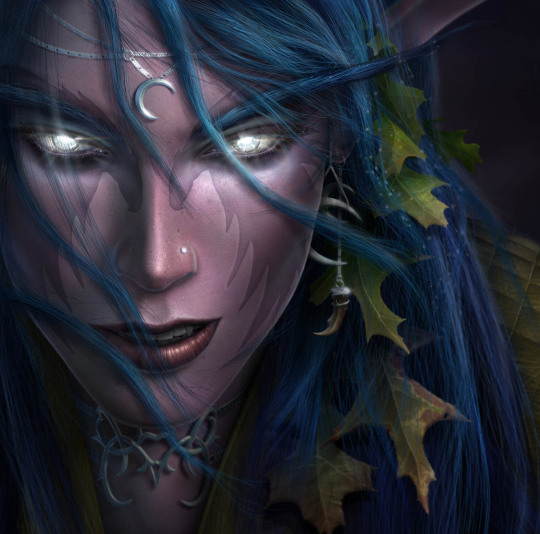
SOURCE
Tip jar
Ko-fi
Paypal
History
Evolution (Year -15,000): Night elves are descended from a tribe of dark trolls encountering the Well of Eternity 15,000 years ago. Those who remained near the Well began to evolve into taller, near immortal beings that resembled what we now know as night elves. Several other races originate from night elves directly: Highborne began as an upper class of night elves that served their then-queen Azshara. After The Sundering, Year -10,000, arcane magic was outlawed in night elf culture and those high elves who refused to give up the practice were exiled and went on to establish Silvermoon City (finishing construction in Year -6,800). This in turn went on to form the Blood elves following Arthas’ invasion of the city (Year 20), and eventually continued on to form Void elves (Blood elves exiled for delving into the Void). Nightborne are Highborne who splintered off and left the conflict during the War of the Ancients. Naga and satyr even are descended from night elves, the former originating from the surviving Azshara loyalists of The Sundering.
It’s A Kind of Magic (Year - 13,500): Night elves begin to study and use arcane magic to build cities, create artifacts and reshape the land. Some resist the urge to use it. Some begin to revel in the use refer to themselves as “Highborne”.
The Sundering (Year -10,000): The War of the Ancients was an important series of battles against the Burning Legion wherein their previous queen Azshara attempted to summon Sargeras into Azeroth. This resulted in the single continent on the planet being split into four separate ones that we know of today. The Lunar Festival begins to celebrate the defeat of the Legion and at some point around here, Nordrassil is created.
Changes in Government (Year -9,400): Tyrande Whisperwind positions the Sisterhood of Elune as the head of both government and military, the Sentinels are formed and Malfurion Stormrage begins training other druids.
War of the Satyr (Year -9, 300): Armies of Satyrs, past night elves turned demonic, begin attacking night elf civilisations. Ralaar Fangfire and Belysra Starbreeze utilise the Pack Form to combat the threat, creating the first worgen. They are imprisoned in the Emerald Dream by Malfurion when they prove to be unpredictable and dangerous.
Exile of the Highborne (Year -7, 300): Since the Sundering, arcane magic was outlawed, fearing another. Although the punishment was death, it became clear that far too many of their people were still practising and unable to face executing so many of their own, they are exiled.
Here Kitty, Kitty (Year -4,000): Tyrande saves the frostsaber queen, Shy-Rotam, and her kin become allies of the night elves.
Isolation (Year -10,000 - Year 20): Night elves were largely unknown outside Kalimdor until the Third War due to their isolationist nature. Medivh mentions knowing the history of The Sundering by the kaldorei in The Last Guardian (First War), but he doesn’t know what they are called today, meaning the term night elf wasn’t heard of then.
Out of the Woods (Year 20): Orcs sent to Kalimdor begin raiding the forest resources and killing Cenarius, causing hostilities with the night elf natives. Immediately after, the Scourge begin to attack. Tyrande awakens Malfurion from the Emerald Dream. Archimonde attempts to attack Nordrassil, but is defeated by the night elves and aid from Thrall’s new Horde and Lady Jaina Proudmoore’s forces. The night elves sacrifice Nordrassil as well as their immortality to save Azeroth. Fandral Staghelm wanted to create another World Tree that would restore the night elves' immortality but Malfurion warned against this but he suddenly fell into a coma and his soul was lost within the Emerald Dream, and Fandral forged ahead with his plans unopposed, becoming the new leader of the druids. This new tree was Teldrassil and the night elves founded Darnassus. However, this tree was corrupted and the dragon aspects refused to bless it.
Let’s Make This Legal (Year 27): Teldrassil’s corruption worsened and it’s discovered that Xavius, an ancient Highborne noble and the first satyr, was responsible, and that Staghelm was part of it and that he induced Malfurion’s coma. With the aid of other druids and the Green dragonflight, the nightmare was defeated. Ysera and Alexstrasza blessed Teldrassil, restoring nature's bond with the night elves. Tyrande and Malfurion are formerly married, concreting the night elven government as a co-leadership.
Welcome Home (Year 28): Mordent Evenshade sought an audience with Tyrande they combine resources, skills and numbers to prepare the wider night elven race for the challenges and Tyrande accepts and night elves are permitted to learn the ways of arcane magic.After an outbreak spread the worgen curse in Gilneas, the Shattering also destroyed the reefs which protected this human kingdom from naval attacks and the Forsaken take advantage of this and invade. The night elves intervened and helped the worgen in acquiring the Scythe of Elune so they could to understand and deal with their transformation. They welcomed the worgen into Teldrassil, allowing several female worgen warriors to join the Sentinel army and bringing Worgen druids into the Cenarion Circle.The Shatterspear tribe joined the Horde assaulted northern Darkshore, though the night elves were able to fend off the attack. Two Horde offensives were launched against Ashenvale and both were stopped. However their assault on the new settlements of the Bilgewater Cartel in Azshara was held off,and a massive Horde-constructed bomb destroyed Thal'darah Grove in the Stonetalon Mountains. The biggest contribution for the night elveswas at Mount Hyjal, where Ragnaros invaded to try and destroy Nordrassil and the Cenarion Circle. The Shadow Wardens and the Green Dragonflight united against him, forming the Guardians of Hyjal. They were successful in fighting off the initial fire elemental invasion, resurrecting several of the Ancient Guardians. Aided by Fandral Staghelm and his newly formed Druids of the Flame even managed to infiltrate the Firelands, killing Ragnaros and many of his lieutenants, including Staghelm, as well as constructing the Sentinel Tree to keep watch over the area.
I Wanna Live Forever (Year 30): To restore the immortality of the Night elves, Lorekeeper Vaeldrin looked for the Pools of Youth, created by an ancient civilization that predated Queen Azshara. He opened a portal to the Krasarang Wilds. Tyrande had a vision sent a group Sentinels, led by Vaeldrin's daughter, Lyalia, However, the target of the spell had been warded using lost Mogu magic, imprisoning the expedition in a magic bubble that slowly drained their life. An Alliance adventurer freed them with the help of Kang Bramblestaff, and the freed expedition constructed a base camp to search for the pools. It turned out that the pools do not grant their immortality freely. Instead, they are used to transfer life energies from one person to another. Lyalia is captured and killed. Vaeldrin, using some of the water from the pools, used his own life energy to save her. The night elves also helped the Pandaren fight off the Dojani mogu and aiding in the defense of Stoneplow.Later on, being one of the largest forces the night elves gained a strong presence at the Shrine of Seven Stars. A powerful artifact called the [Divine Bell] was discovered. and he night elves moved it to their capital for study and safekeeping. The city was infiltrated and the bell was stolen by the Horde. During the Siege of Orgrimmar, Tyrande had mustered an army of her people in Ashenvale and began a slow march towards Orgrimmar. She and her Sentinels then distracted Garrosh's Kor'kron, allowing Alliance forces and Darkspear rebels to invade the city.
A Very Bad Dream (Year 32): The Emerald Nightmare is revealed to be still active, its source being located at the tainted World Tree, Shaladrassil in Val'sharah Xavius re-established his ties to the Burning Legion and attempts to use the Nightmare to corrupt the world, however, his true loyalties remain with the Old Gods. He captures Malfurion and taunts Tyrande away, distracting her so he can corrupt Ysera. He succeeds and the adventurer along with the elves are forced to slay her. Xavius is killed and the Emerald Nightmare begins to dissipate and the Emerald Dream is restored. Later, the prime naaru, Xe'ra, sent her [Light’s Heart] to transmit an urgent message to the defenders of Azeroth that reveals she believes Illidan was a foretold champion to save the world and adventurers sought to revive him. He aided the Armies of Legionfall in Tomb of Sargeras and Kil'jaeden is killed. Illidan had forced their hands into immediately landing the army into an invasion of the Legion’s homeworld, Argus, as he had left a rift from Azeroth to Argus open. He is present Argus Campaign and ventures into Antorus to free the Pantheon and Argus’s world-soul from the Burning Legion’s grasp. The Pantheon was eventually freed and the Vindicaar’s champions slew Argus the Unmaker, the dark titan created from Argus’s world-soul. Sargeras was imprisoned in the Seat of the Pantheon, Illidan serving as his jailor.
Vengeance is Best Served Dark (Year 33): Sylvanas Windrunner invades the night elven lands of Darkshore and burns down Teldrassil during the War of the Thorns. Tyrande, Maiev, Sira Moonwarden and Shandris Feathermoon approached King Anduin Wrynn to ask for aid in retaking their lands. However, due to their campaigns in Zandalar, Arathi, and Kul Tiras, Alliance forced were too far spread and he had to refuse. Tyrande went ahead to retake Darkshore herself. Along with an adventurer, the three other elves follow her and find her ship at Zoram Strand, which contained a book about the ancient ritual of the Night Warrior, a dangerous feat. She however succeeds and they track down Nathanos Blightcaller and the Val'kyr attempting to raise Delaryn Summermoon. While Tyrande manages to kill one Val’kyr, Sira is killed during the battle and both her and Delaryn are raised in undeath. Sira walked away from the battlefiled, now calling herself a Dark Ranger. Delaryn is made a Dark ranger captain. Sira opposes Maiev during the Darkshore Warfront.
Physical traits
Life expectancy: Prior to the destruction of Nordrassil, the world tree granted immortality to the night elves. It’s unclear as to whether elves born after this event continue to age as mortal races do.
Height: Night elves tend to grow to around 7 feet (7 for females, 7.5 for males).
Eye colours: Night elves most commonly have silver eyes, but historically those born with amber eyes are prophesied to be powerful.
Abilities: All night elves possess the ability to Shadowmeld and stealth even in mid-combat. This is believed to have been gifted to them by their moon Goddess, Elune.
Cosmetics: Female night elves bare facial markings around their eyes that represent an aspect of their skills or personality. It is believed that is is part of a rite of passage ritual. Those without markings are highly unusual and this means that they are either too young to have undergone the rite, or are of Highborne descent.
Personality traits
Tree huggers: Night elves are raised in a culture of respecting nature and earth, their society is heavily ingrained with a reverence for the all forms of life. You’d be hard pressed to find an night elf that doesn’t care for nature. Littering, hunting for sport, torturing prisoners, or otherwise desecrating natural land/life wouldn’t be characteristic of a night elf.
Other races: Due to their isolation being broken by orcs taking from the forest, night elves tend to be wary of other races. This can range from outright prejudice to mild caution. With their bonds now strong with the Alliance, the latter reaction to others is more likely. They have a unique bond with the draenei as they landed close to Darkshore which is night elf territory, and were the first other humanoid race the draenei encountered on Azeroth. A draenei ambassador has been known to stand to the right to the leaders in Darnassus and draenei have been entrusted in caring for specific outposts and sites of night elf importance.
Other creatures: Night elves are known to have a great fondness for two animals in particular: nightsabers and owls. Nightsabers serve as mounts for them and owls as sentries. It is therefore unlikely for them to hunt these creatures for food.
Culture
Language: Night elves speak mostly in their native tongue, Darnassian, but also know Furbolg and Thalassian (language of the high elves, blood elves, void elves). They learned Common to better communicate with their human counterparts. It could be considered reasonable to assume that due to a common origin, they also have knowledge of Nazja (the language of the Naga). However, night elves are known to be offended by comparisons between their tongue and that of their disgraced Thalassian-speaking and aquatic cousins because of ideological differences.
Government: Night elves are one of the few races that have a co-leadership. Tyrande is the most prominent leader alongside her mate Malfurion. Prior the The Sundering, the Sisterhood of Elune, a sect of priests, held the most power.
Military: The most central form of defence for civilian areas are the Sentinels, an elite guard of mostly female warriors that have strong ties to the Sisterhood, established approximately in Year -9,400. Tyrande served as the General of the Sentinels until she appointed her second-in-command Shandris Feathermoon to lead them after the Third War. The Watchers, a law-enforcement acting body, originated within night elf society and performed as jailors for night elf prisoners, members volunteering from the Sisterhood of Elune. They were created when Maiev Shadowsong put herself forward to guard Illidan Stormrage after he attempted to create a second Well of Eternity following The Sundering. The highest rank of the Watchers is Warden, employed as jailors, assassins and bounty hunters.
Religion: The Moon Goddess Elune is central to the night elf culture. It would be extremely hard to find a night elf that doesn’t believe or respect the goddess. The Sisterhood of Elune, currently led by Tyrande as their High Priestess, is the oldest night elf order known to Azeroth. Alike the Sentinels, although men are welcome, most members are female. Night elves consider Elune to be a single entity in a world of many rather than their own interpretation of a single god or powerful figure; when Velen commented on the similarities between Elune and the naaru, Tyrande requested that he not make such claims when in Darnassus or in the presence in the Sisterhood of Elune.
Druidism: Malfurion is the first of the mortal druids, trained around Year -10,000 by Cenarius. After the creation of Nordrassil, Dragon Aspect Ysera bound the druids to her and her realm of the Emerald Dream. The Cenarion Circle was eventually formed as a governing force of the druids. Druids work in four specialisations: Balance, Feral, Restoration and Guardian: all obtaining their powers from within the earth. Along with the tauren, night elves have a special connection with the craft.
Traditions
It is common practice to take a fang from a deceased nightsaber mount in remembrance for it.
Night elf children are given an owl on their first birthday.
#kaldorei#night elf#Sin'dorei#nightborne#Quel'dorei#highborne#high elf#tyrande whisperwind#Malfurion Stormrage#illidan stormrage#maiev shadowsong#Queen Azshara#blood elf#wow#World of Warcraft#roleplay#elf#bfa#battle for azeroth#guide
501 notes
·
View notes
Text
Headcanon: Morgan’s Stubbornness
Morgan likes to call it persistence, but make no mistake, Morgan is very stubborn when he wants to be, but it only happens with very certain things...mainly with trying to make his friends happy in some respect or another. This is seen a little bit in his supports and it honestly doesn’t matter how grumpy or irritated someone gets or seems to get with him, he’ll try to make them smile regardless. Fortunately it’s not as complicated with some like Cynthia (who is normally cheerful and won’t be defiant against his attempts to hang around her and brighten up her day), and Owain (similar situation as with Cynthia).
It’s a little more complicated with the likes of Lucina (who feels so honor-bound and has a hard time smiling or having her spirits lifted a lot of the time) and Noire (who never feels the need to use her talisman because of Morgan himself, thankfully, but she is often very down on herself) where they’re not so much on the spectrum of either “openly accepting and appreciating Morgan’s efforts to make them happy” or “denying it but secretly being glad Morgan’s there for them anyway” as a lot of the others are (Severa is a prime example of the latter, for instance).
Yarne is another person I’d categorize in that same group as Cynthia and Owain. Even though he struggles around the others, he seems somewhat comfortable around Morgan and when he takes Morgan’s advice, he really breaks through, makes some progress, and is a lot visibly happier with things. I love that support set, I’ve got to admit.
But the long story short is that if Morgan feels something is wrong, he is going to do his damn best to either fix it or try to make you fret over it less by doing something for you that’ll make you happy, and don’t tell him to stand down and not try, because there’s no chance of that. It doesn’t always end very well, though he always means well every time, but even a few failed tries only serve to help him figure out what really will bring you some joy in the face of trouble...which is very much his philosophy on all of it of course. Being as patient as he is, it also makes him perhaps a bit too persistent for his own good, but it usually ends up going right in the end even if he screws up a couple times first. Usually him screwing up is more the result of being so earnest with his words as he often is that what he’s trying to say comes out sounding wrong, and he needs some time to figure out how to word it properly. The easiest way, though, is honestly just to tell him what’s wrong or what you need to make you feel better. Take a look at his supports with Nah, where she has a positive attitude around him and very directly tells him she needs the Naga’s Bell because Naga asked for it. Obviously he was a bit too reckless in going and getting the Naga’s Bell, but he did get it in the end rather quickly. Speaking of recklessness, that’s another problem of his sometimes. He will go to extreme lengths to help someone, especially during those instances when he feels a serious romantic love for them. He sometimes gets carried away and puts himself in danger to reach that end of lifting their spirits, but for him? No task is too tall...at least in his eyes anyway (though let’s face it, in most playthroughs of FE Awakening he will be an absolutely destructive force of nature late-game, so there’s not a lot he can’t face).
That persistence and resilience of his is both of a blessing and a curse, and will eternally be both, no two ways about it, but it always seems to work out well in the end, thankfully.
1 note
·
View note